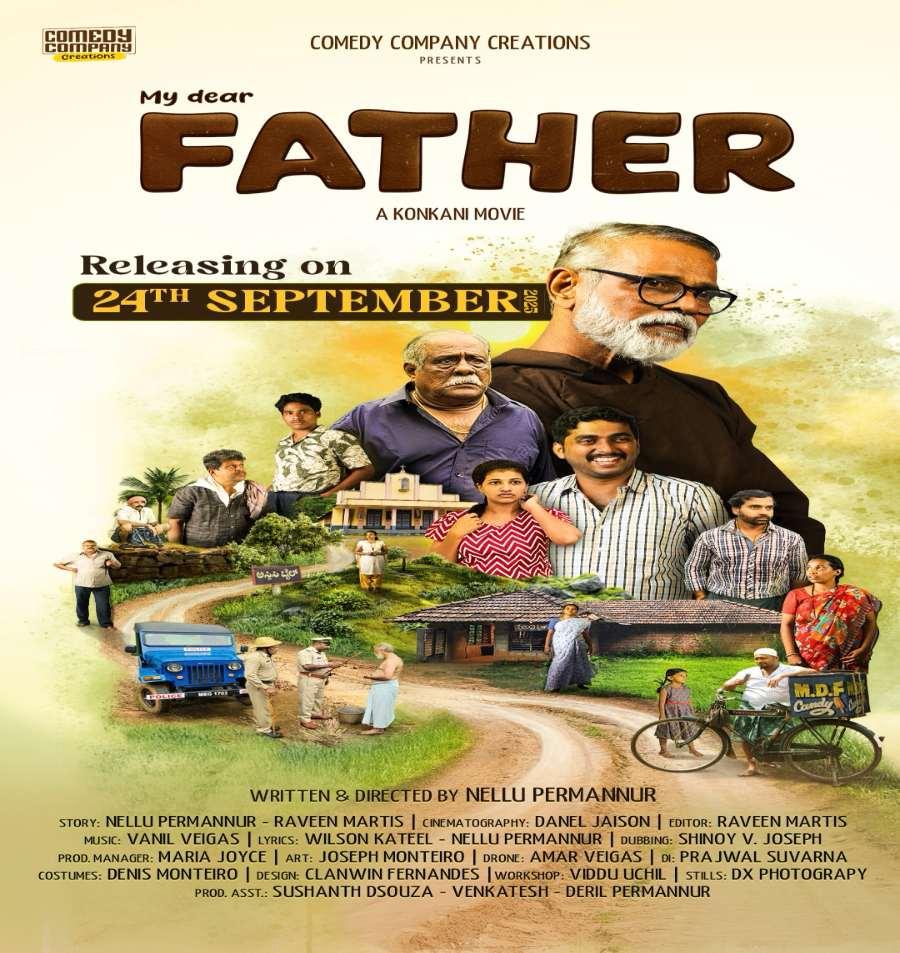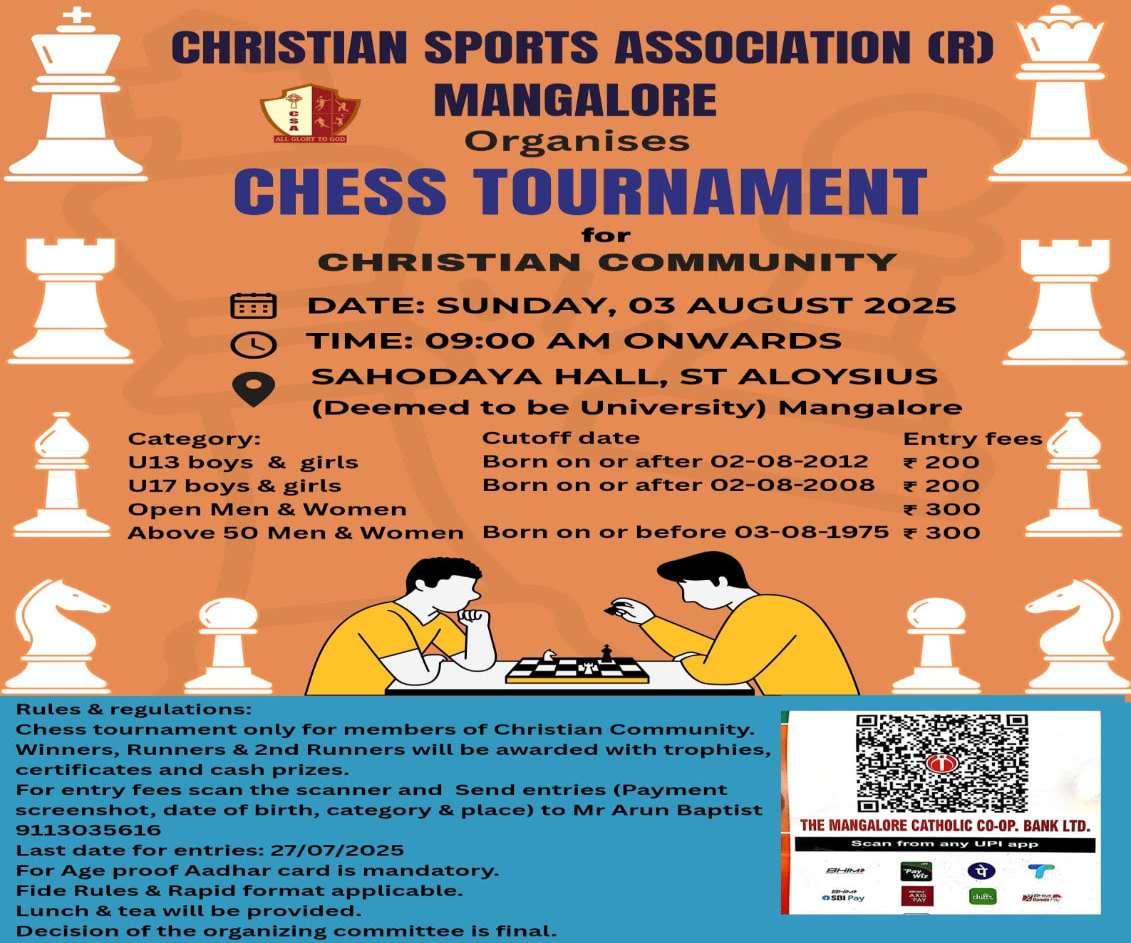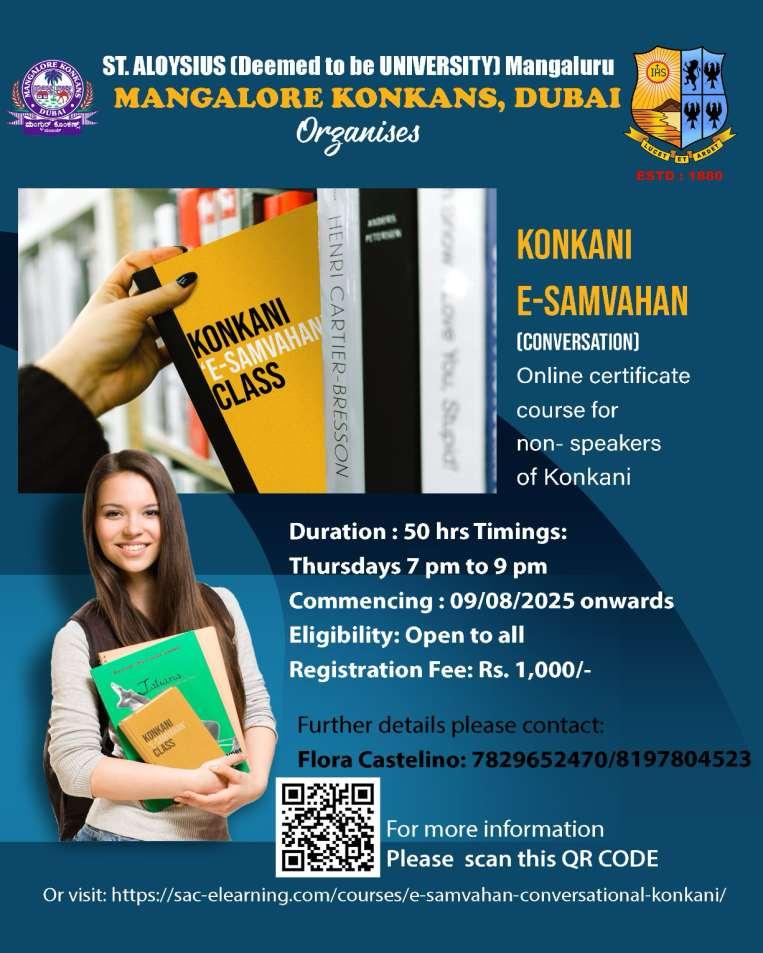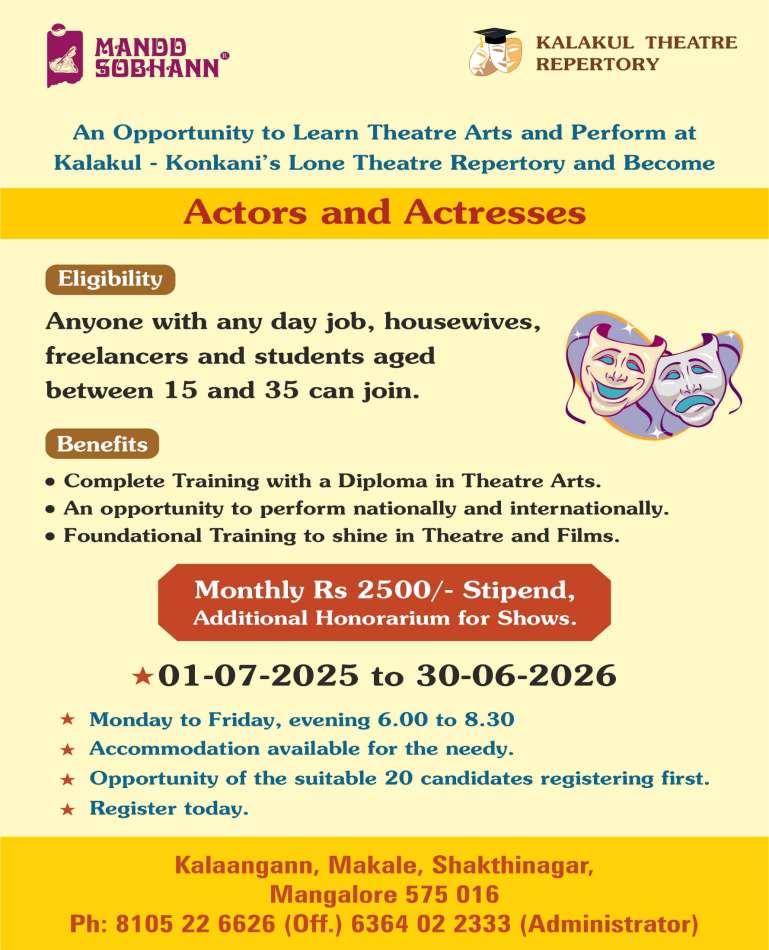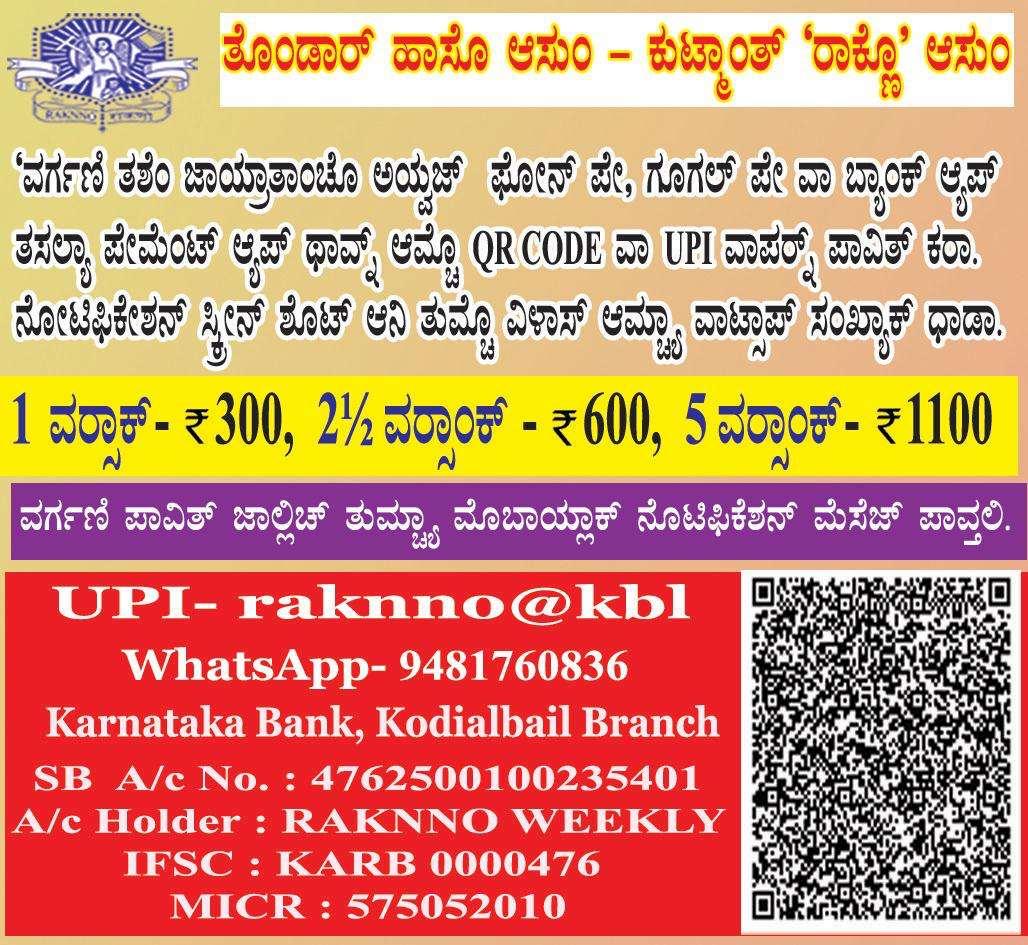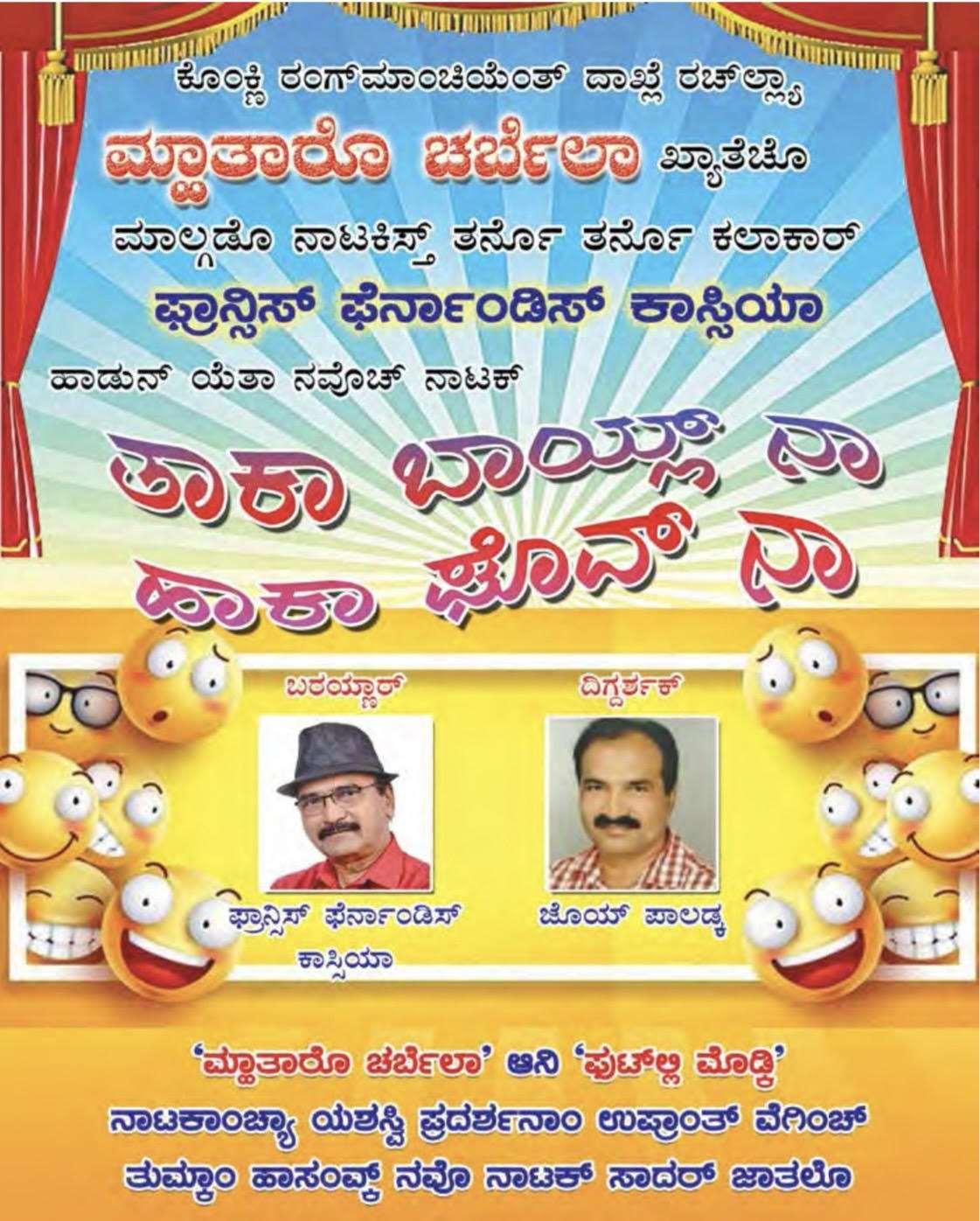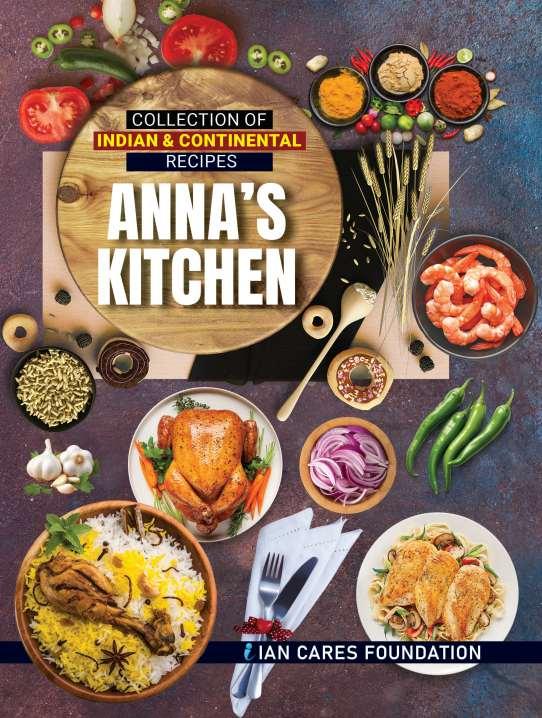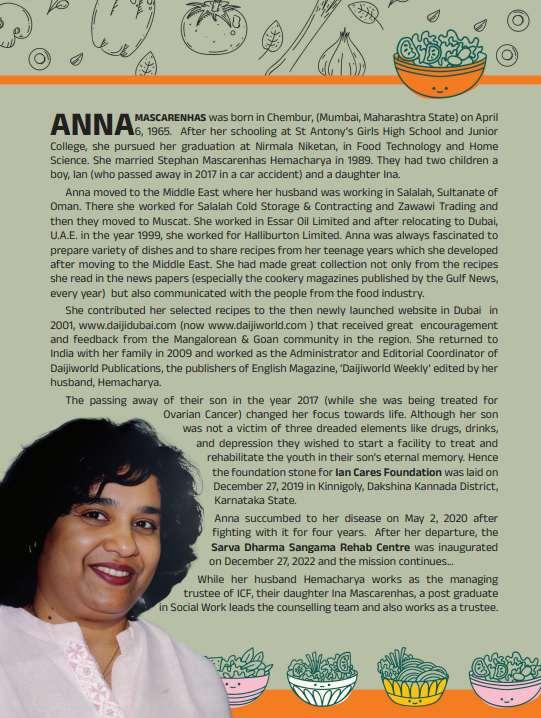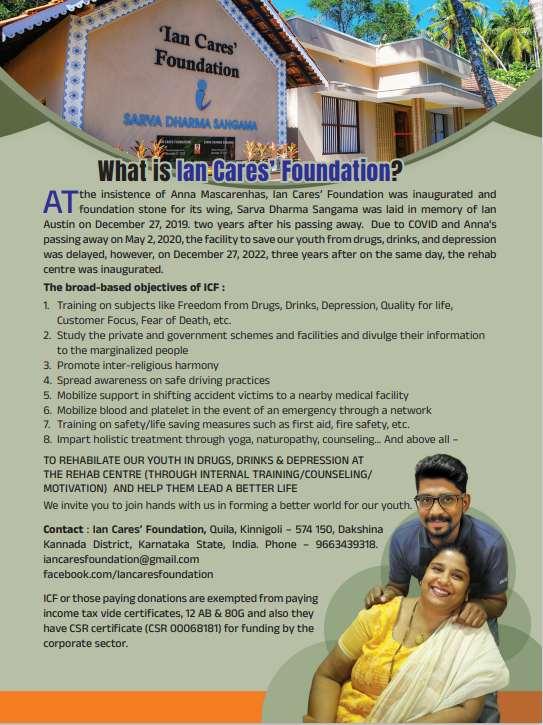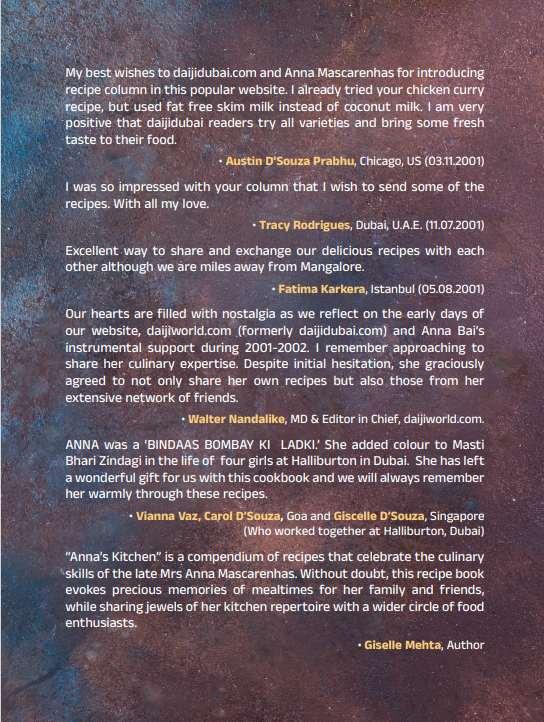











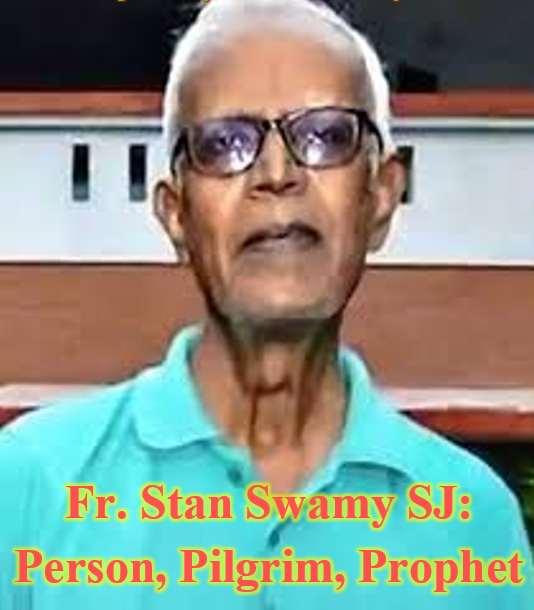





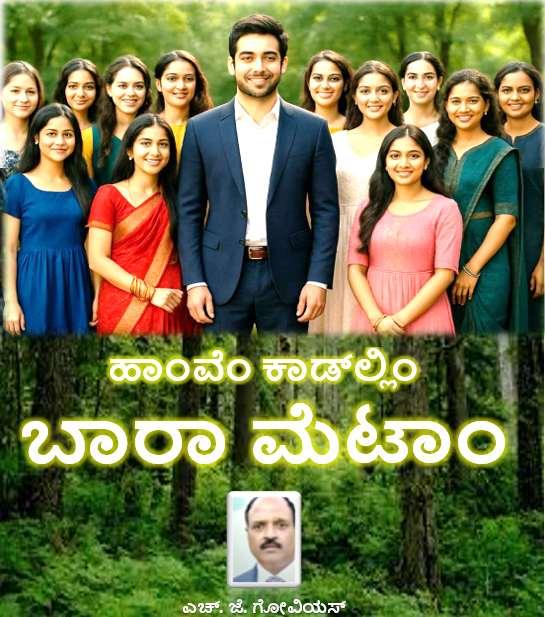






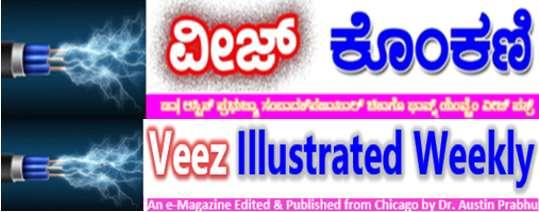








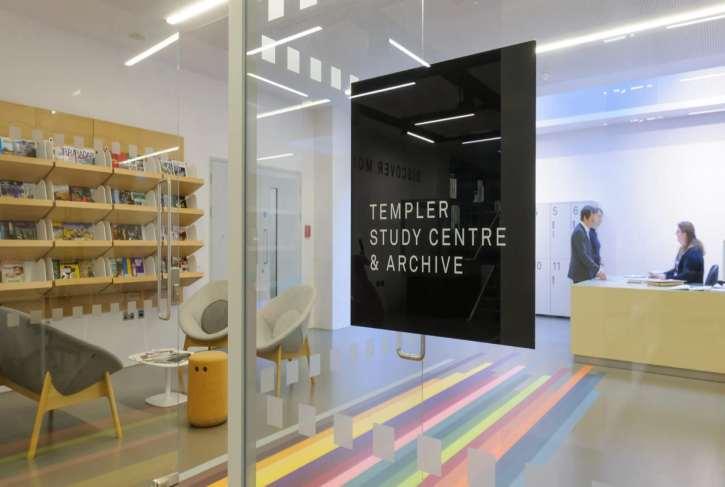
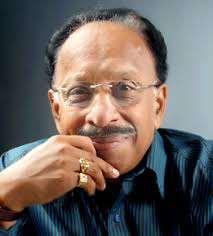



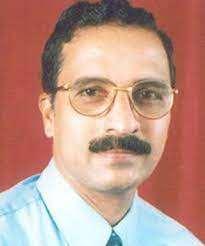








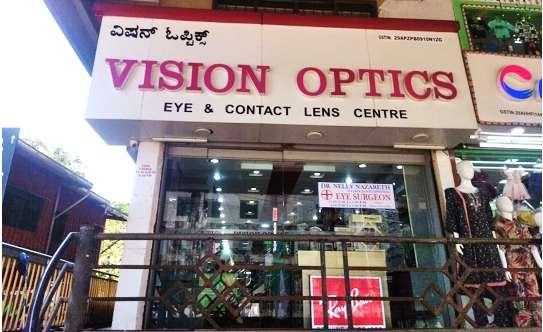
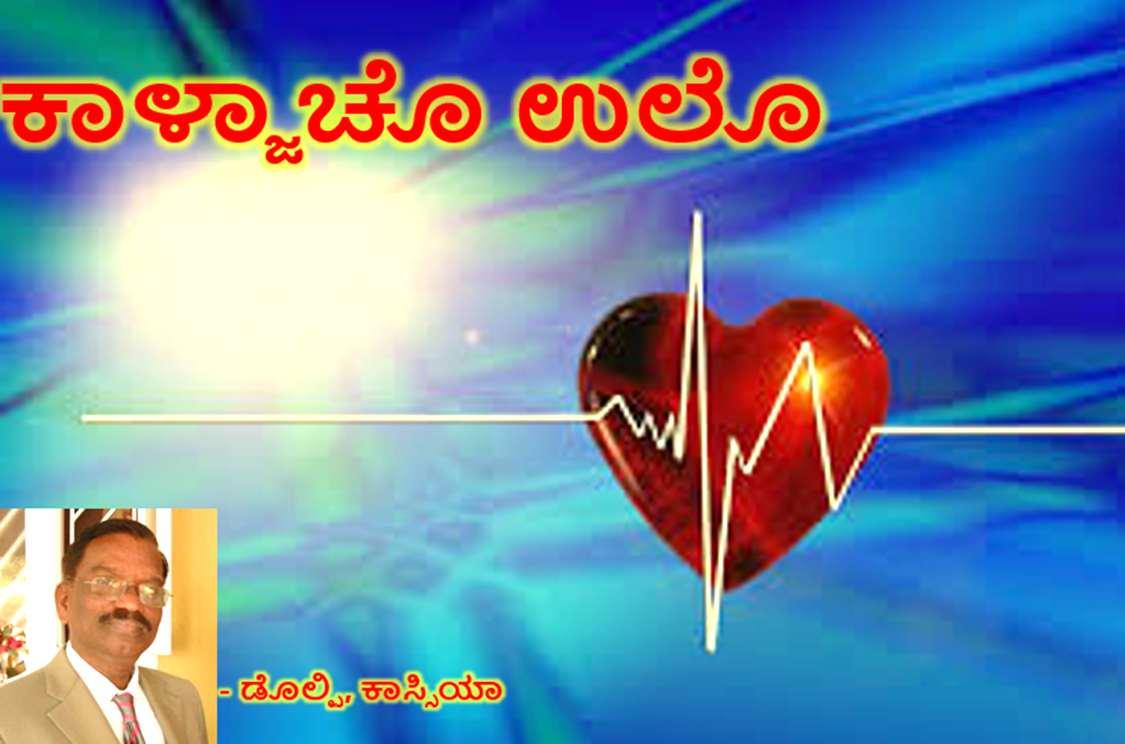




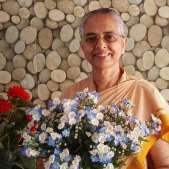
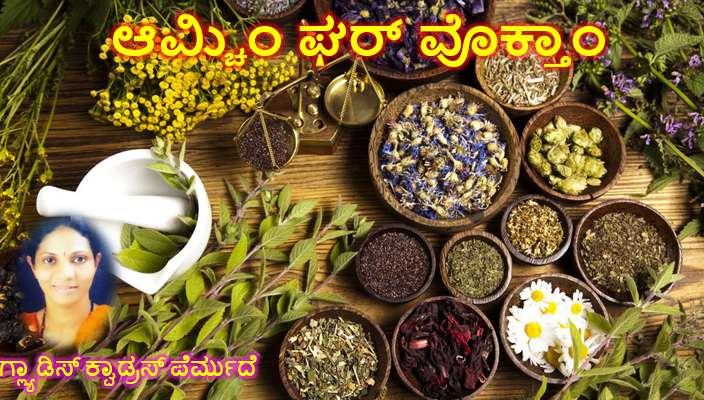














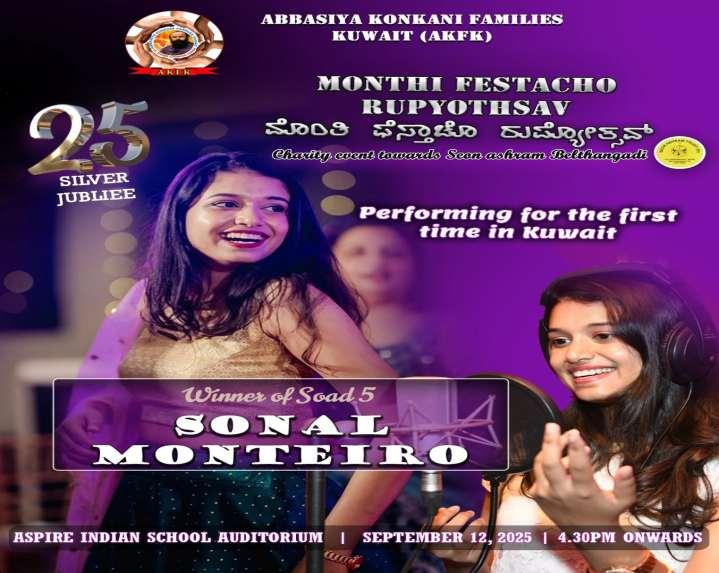















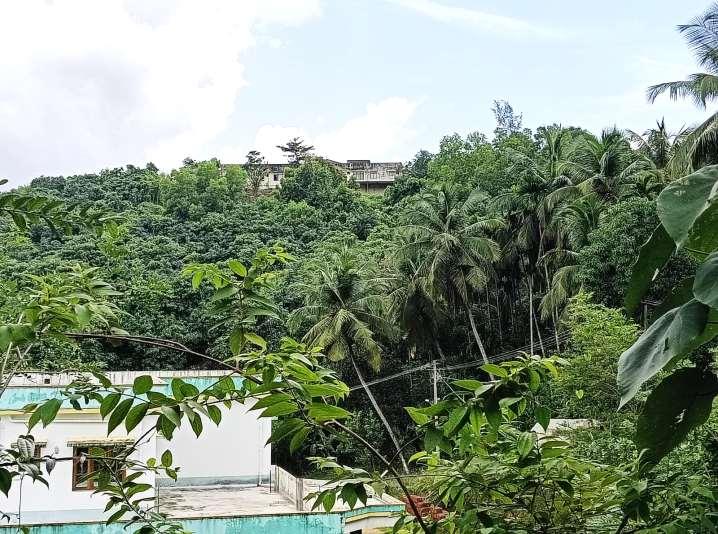
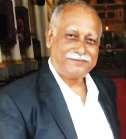


















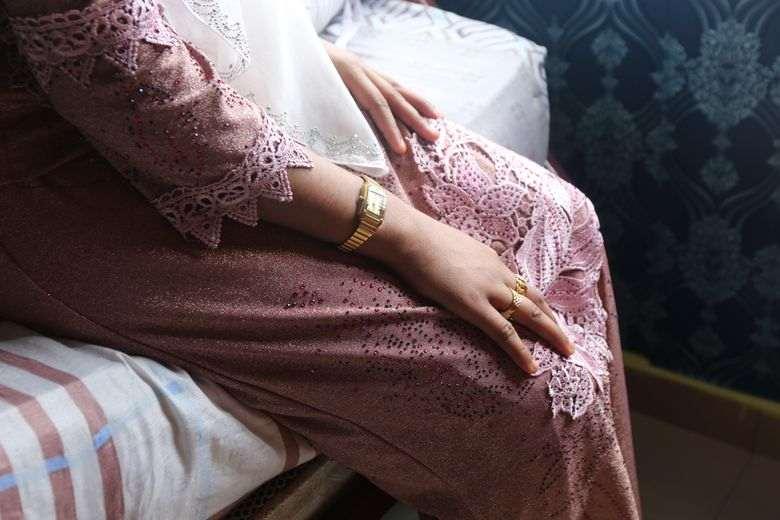


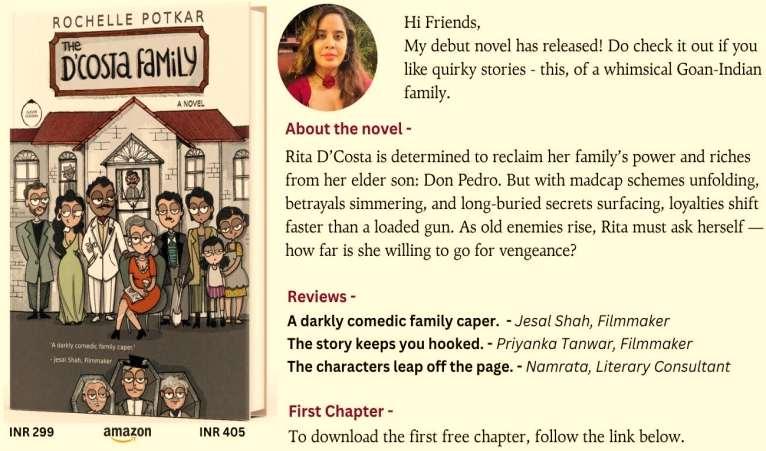









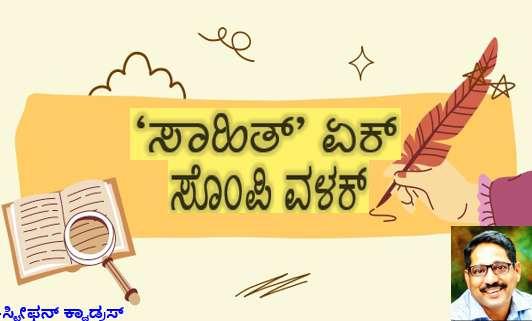

















































































































































































































































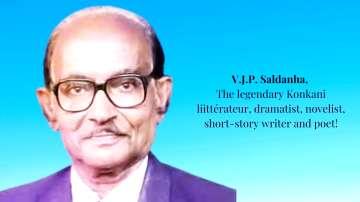
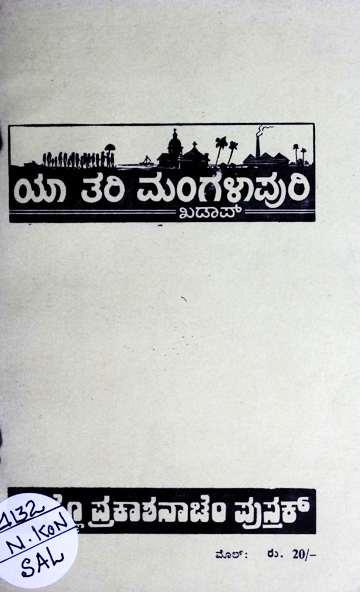
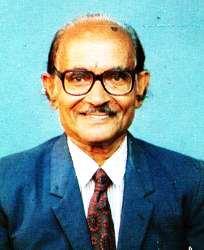
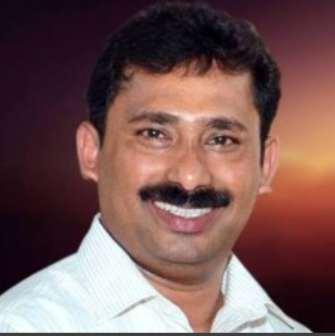
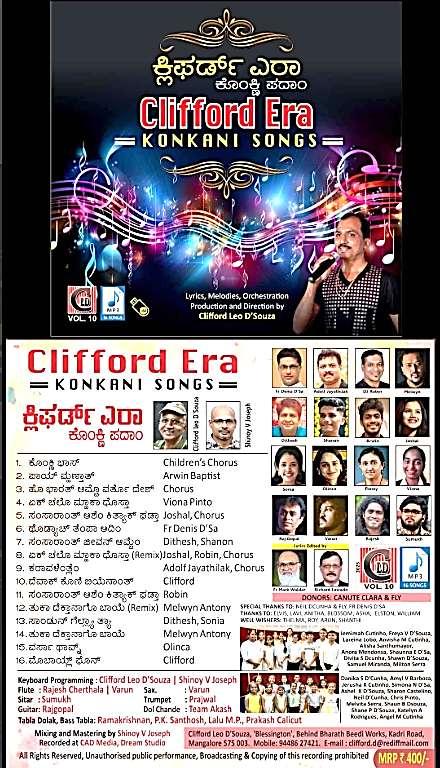

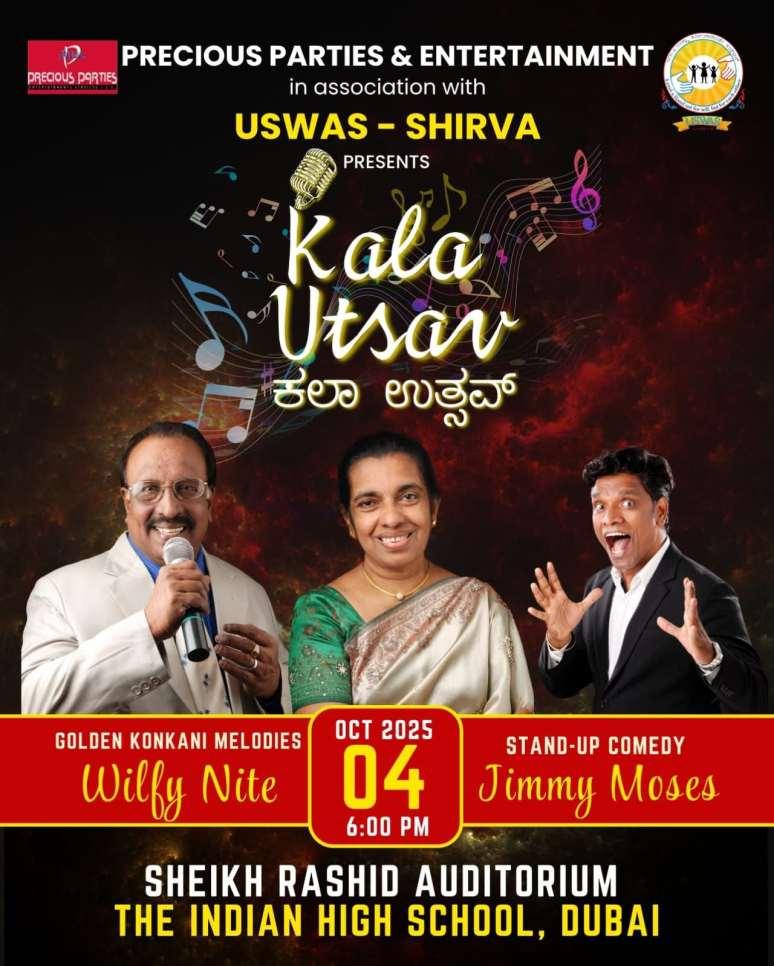
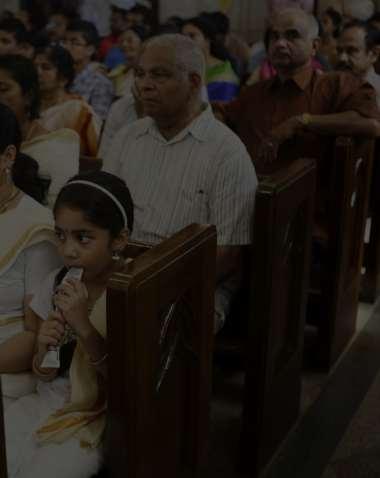
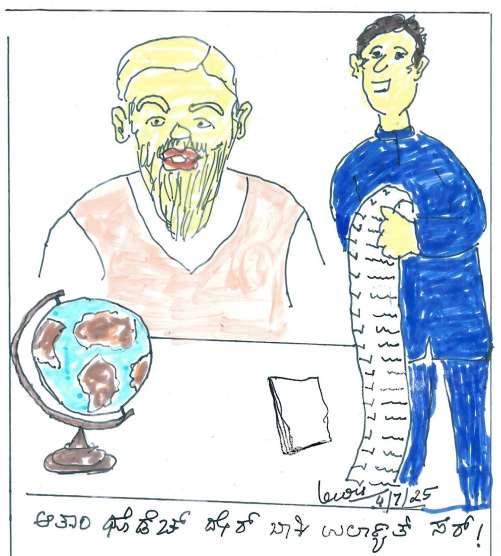



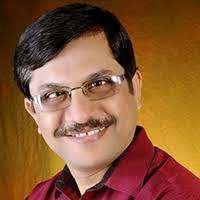




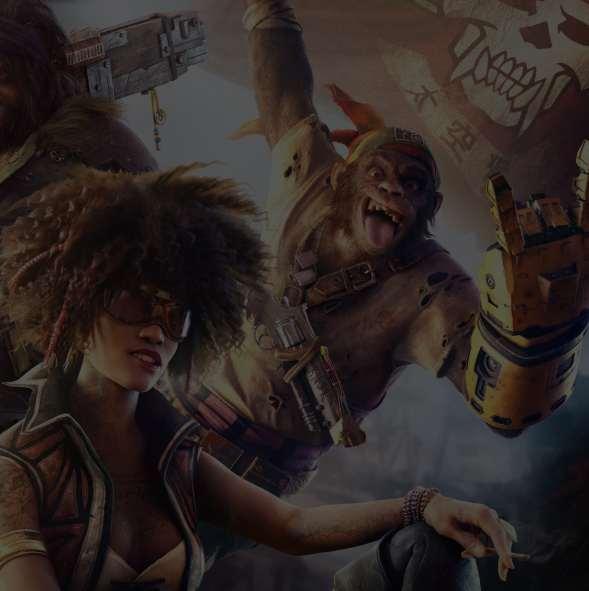
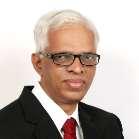

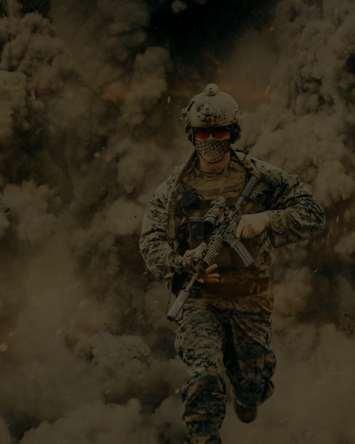

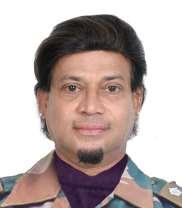

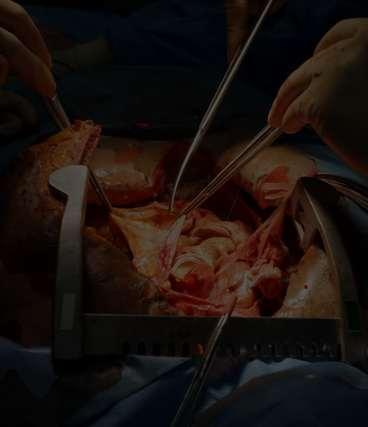
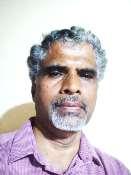

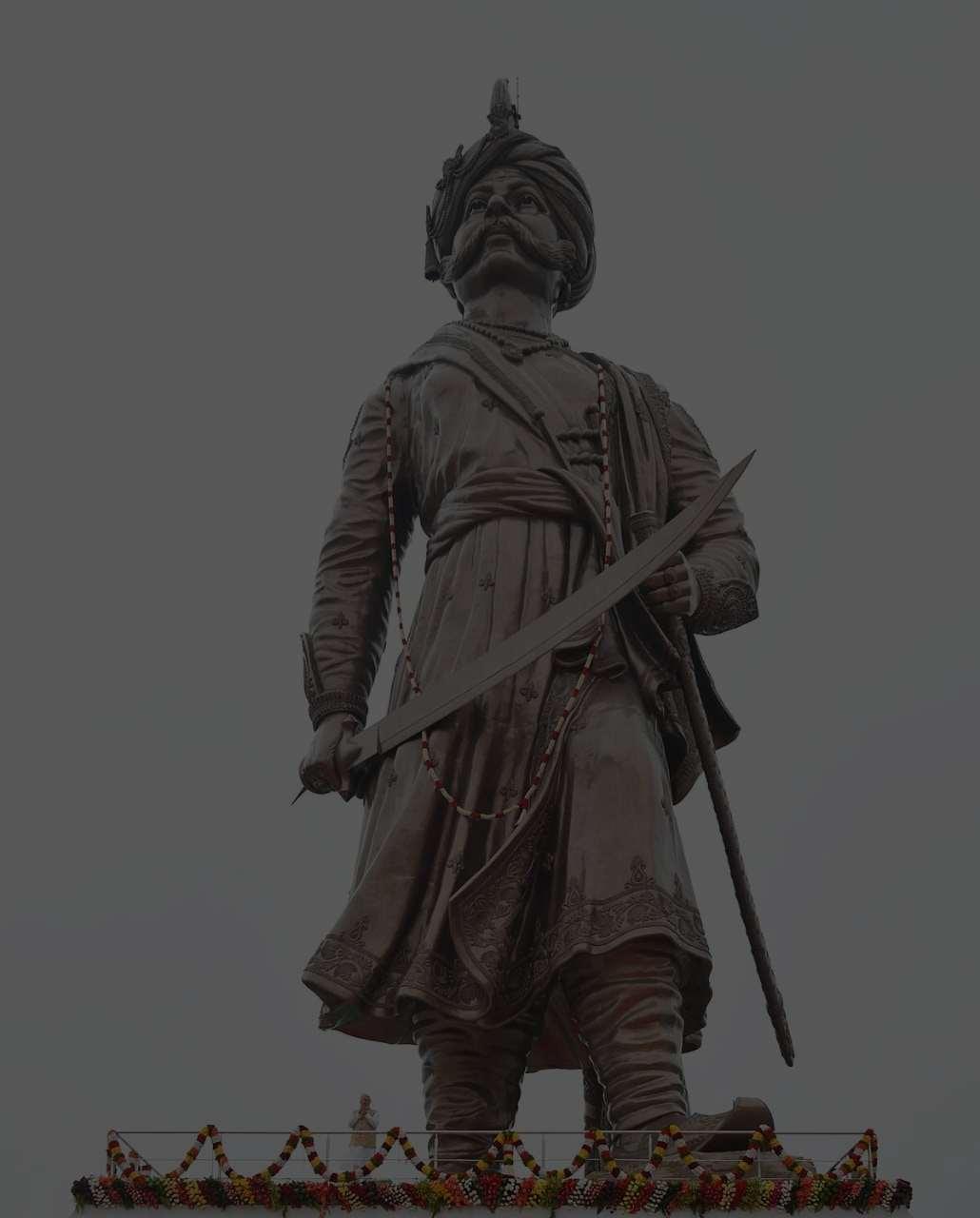
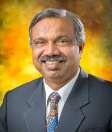
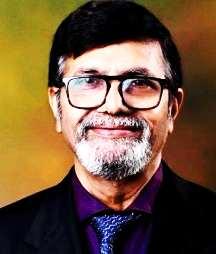
? Navemruup aadinchaddethavn pyaant aathanhyaataathaavn kyaap polisaanchyaanhesnnak dilaan navem aadhuniknhesnnaruup kaanuun paalan karchyaant hennhesannkarith sudhraap?








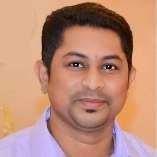

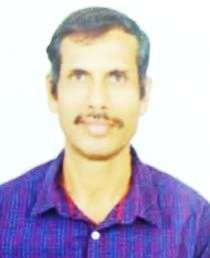
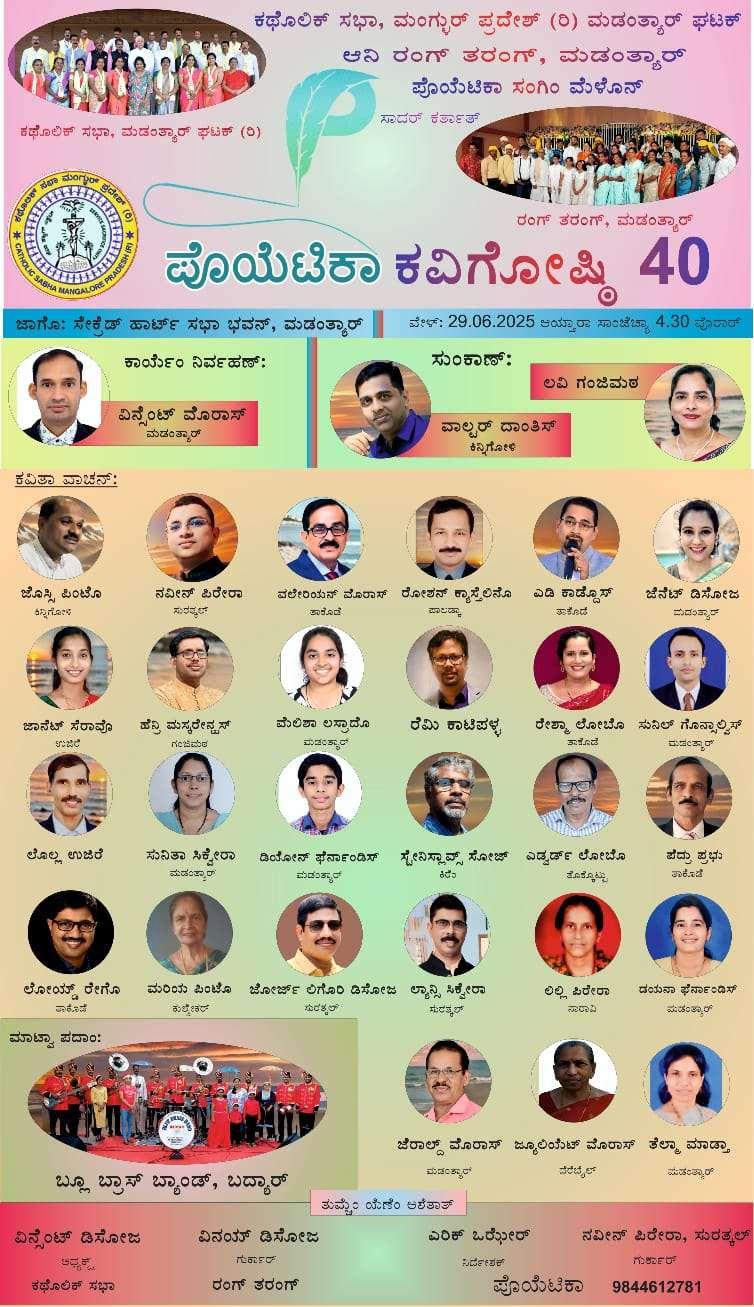

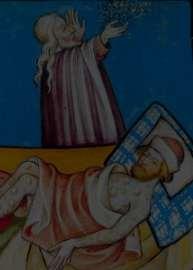
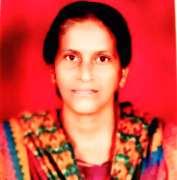

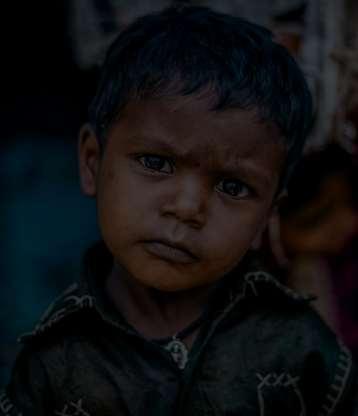
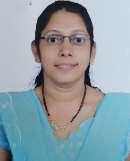


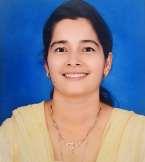

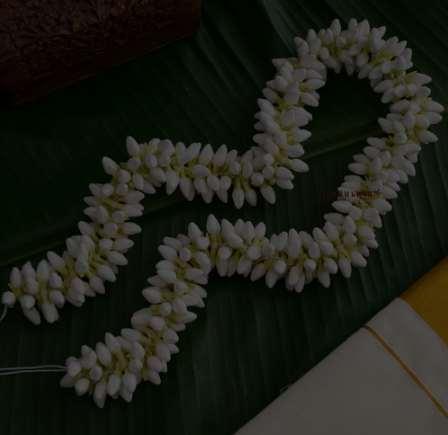
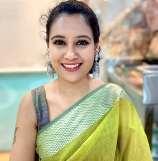
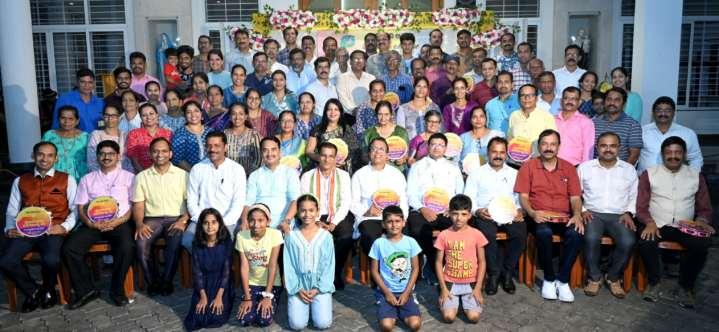
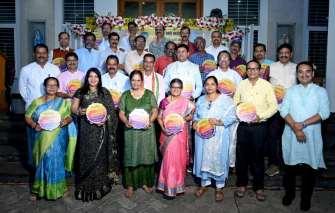
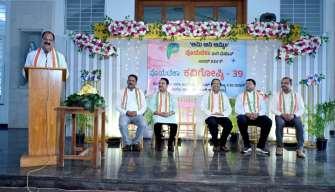
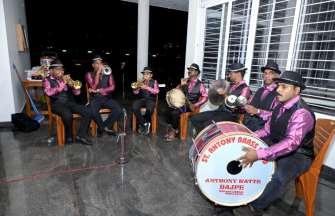
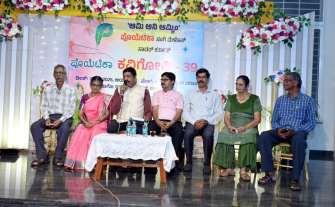
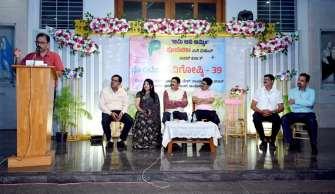
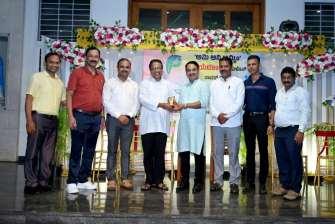
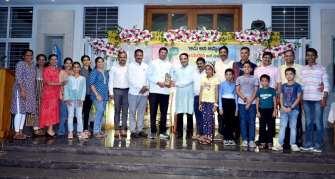
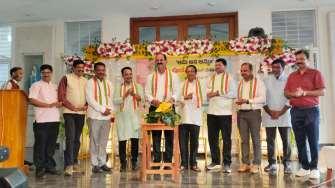
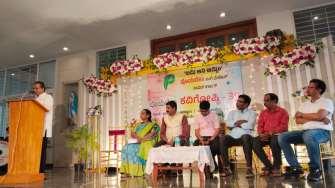
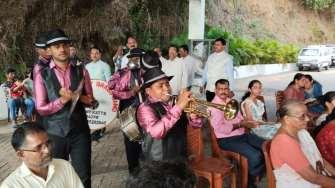
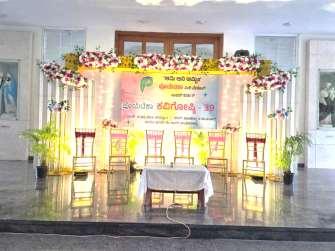
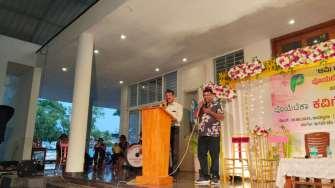
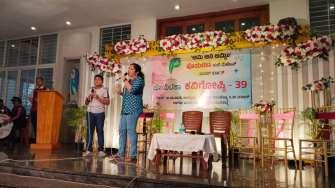


















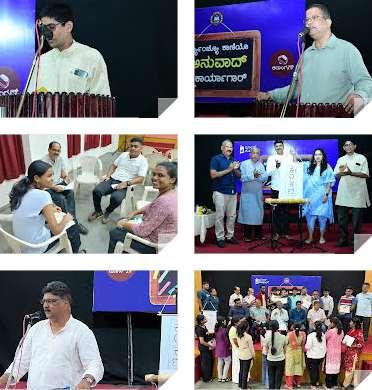
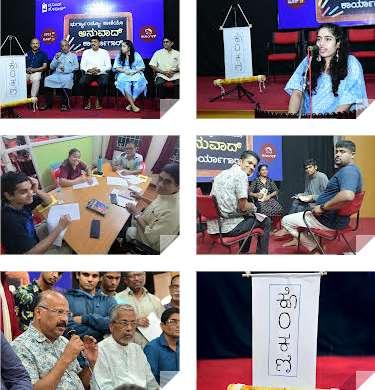
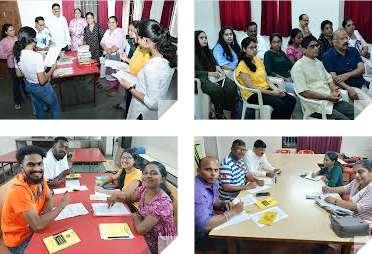
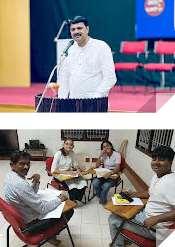
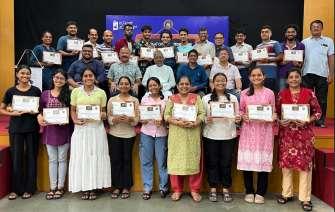


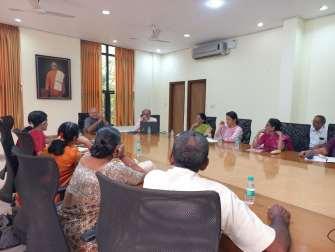

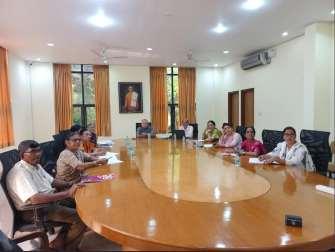








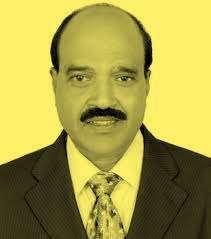


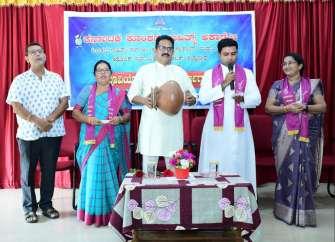



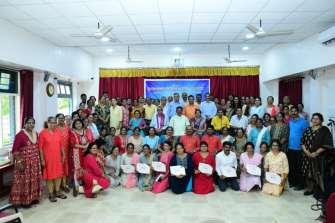
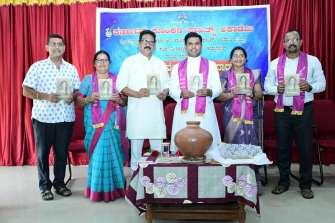
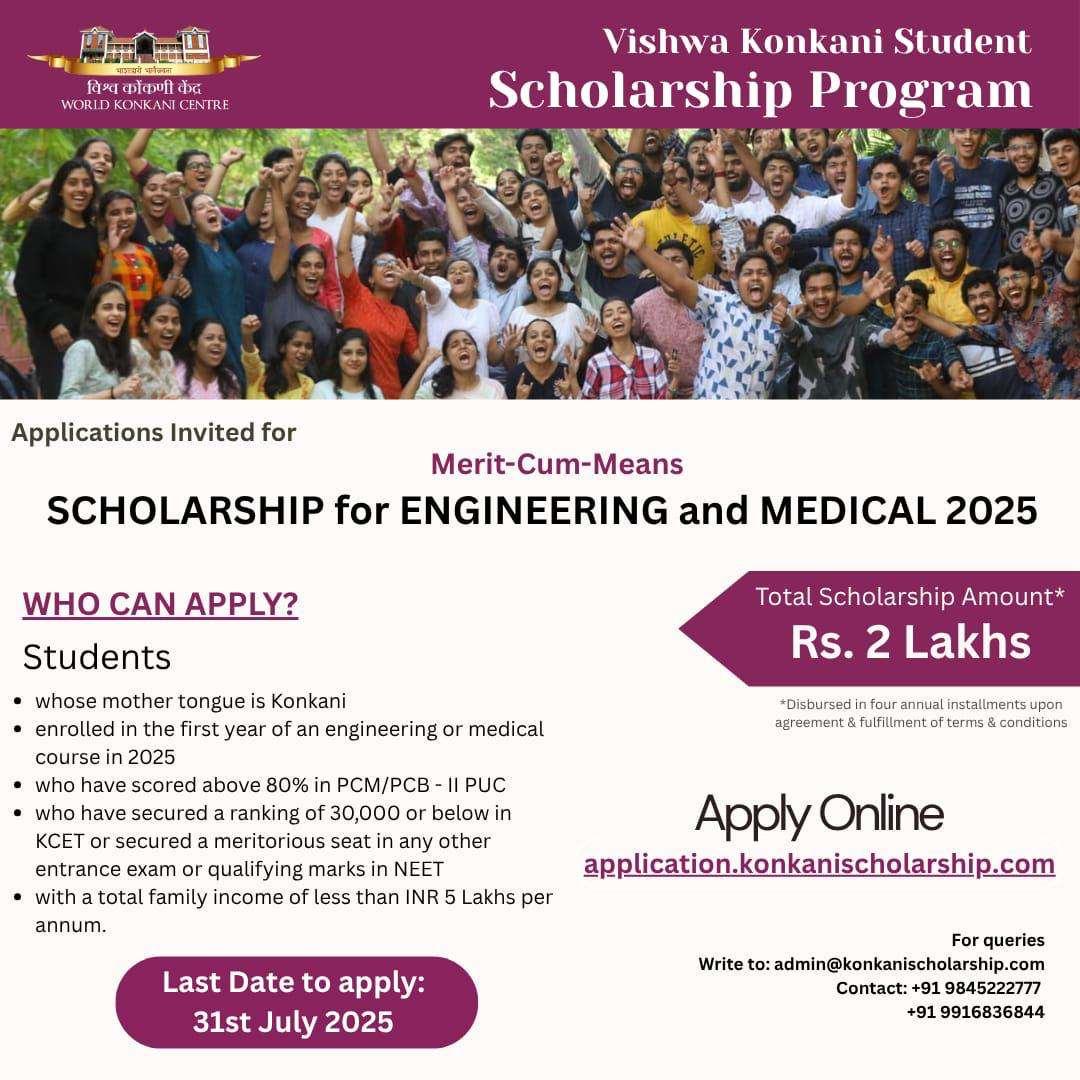
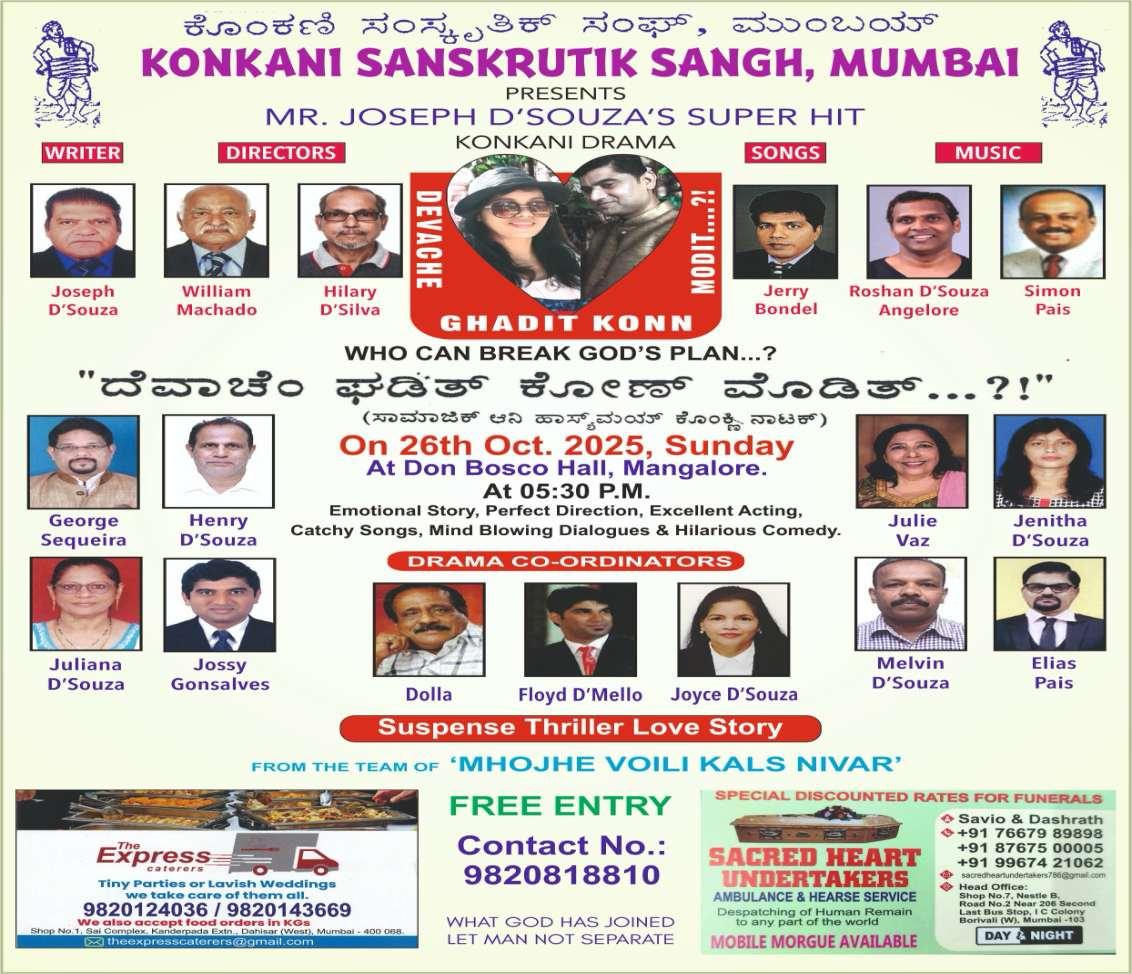
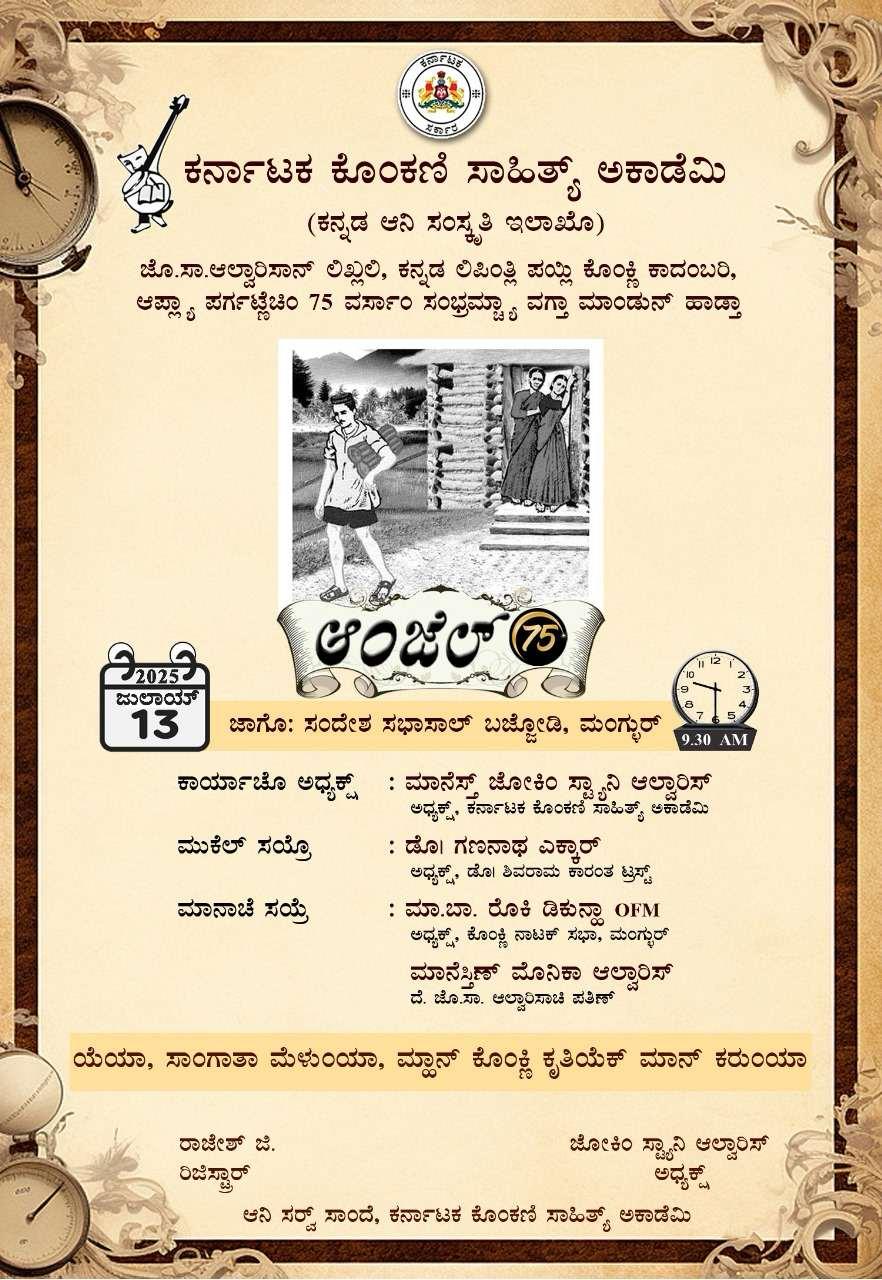
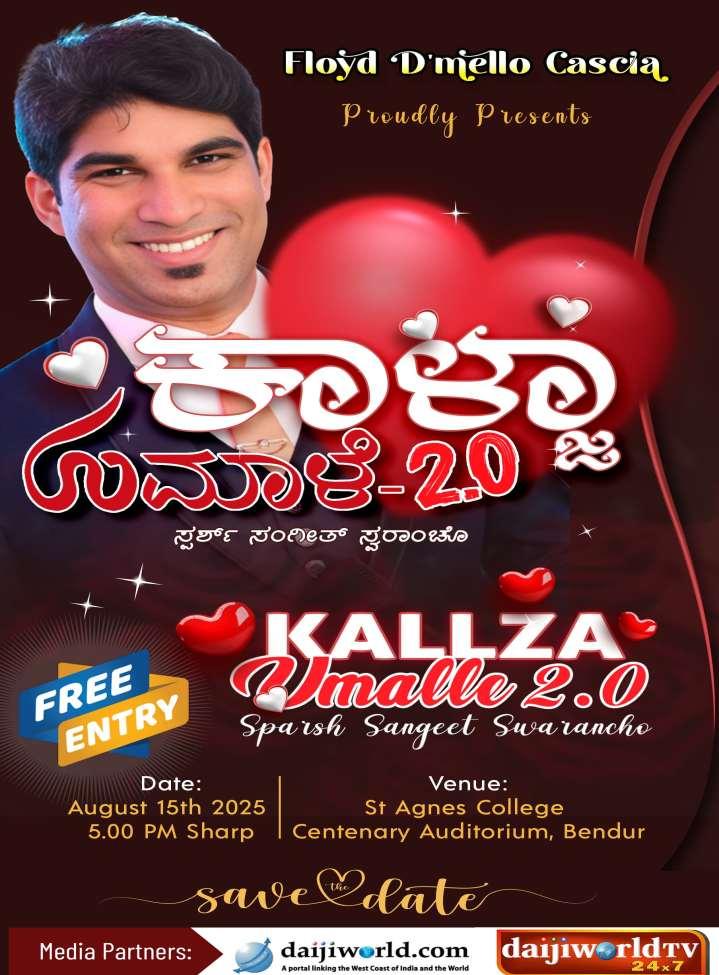
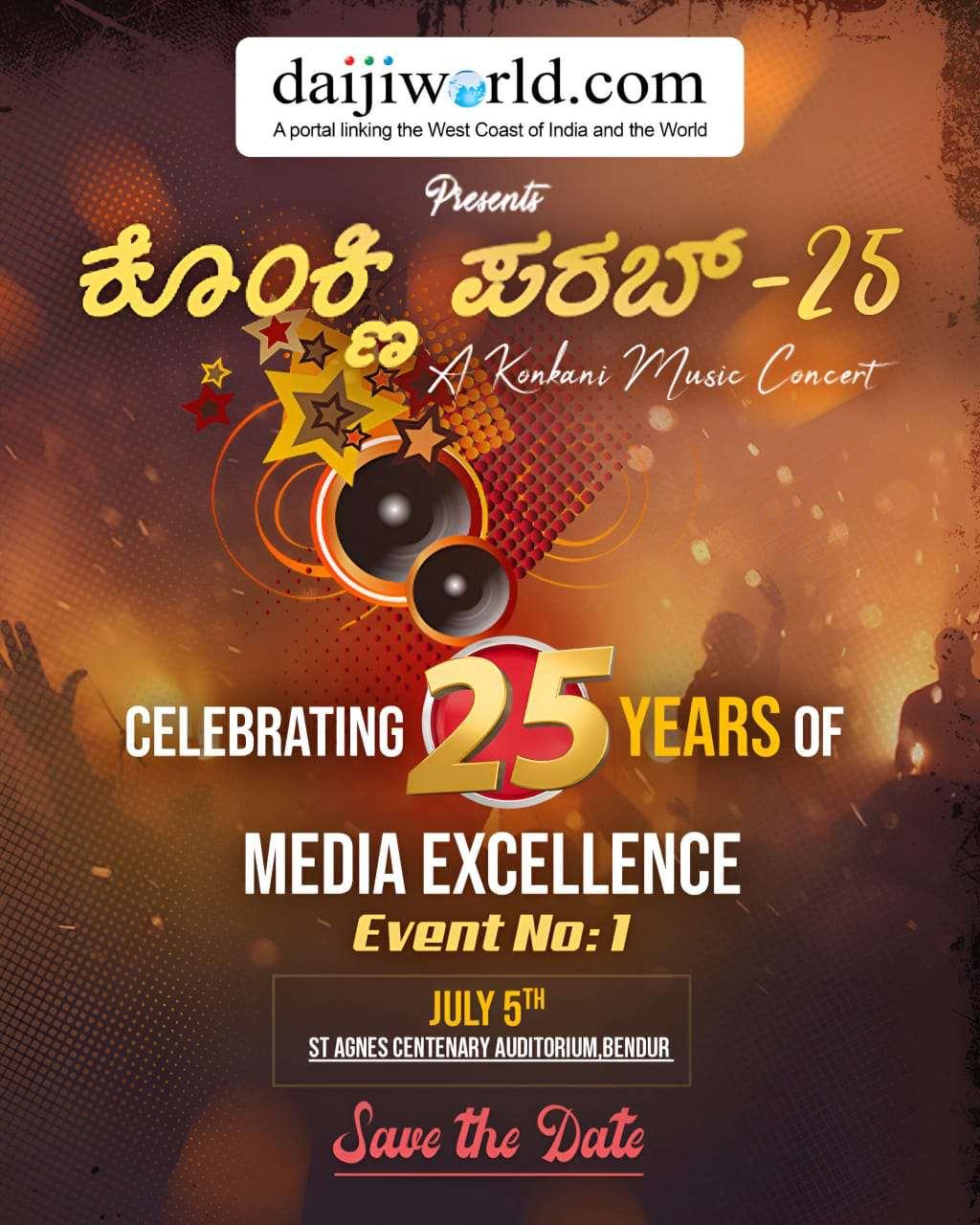
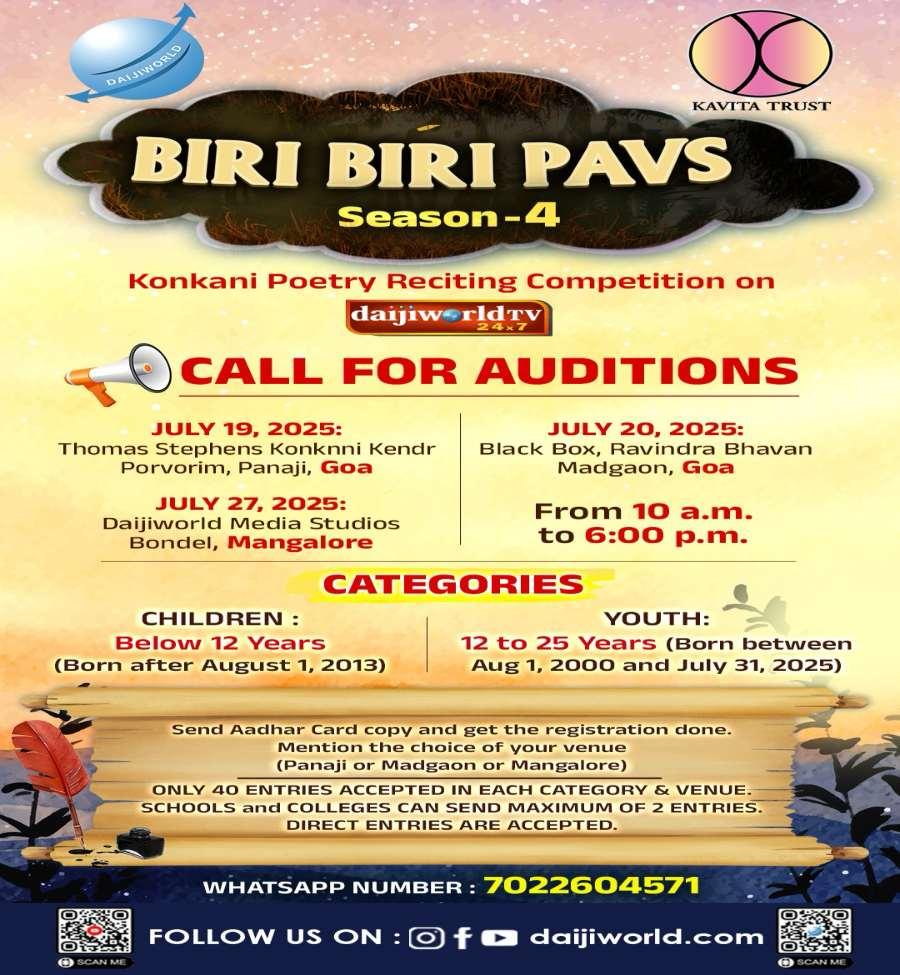
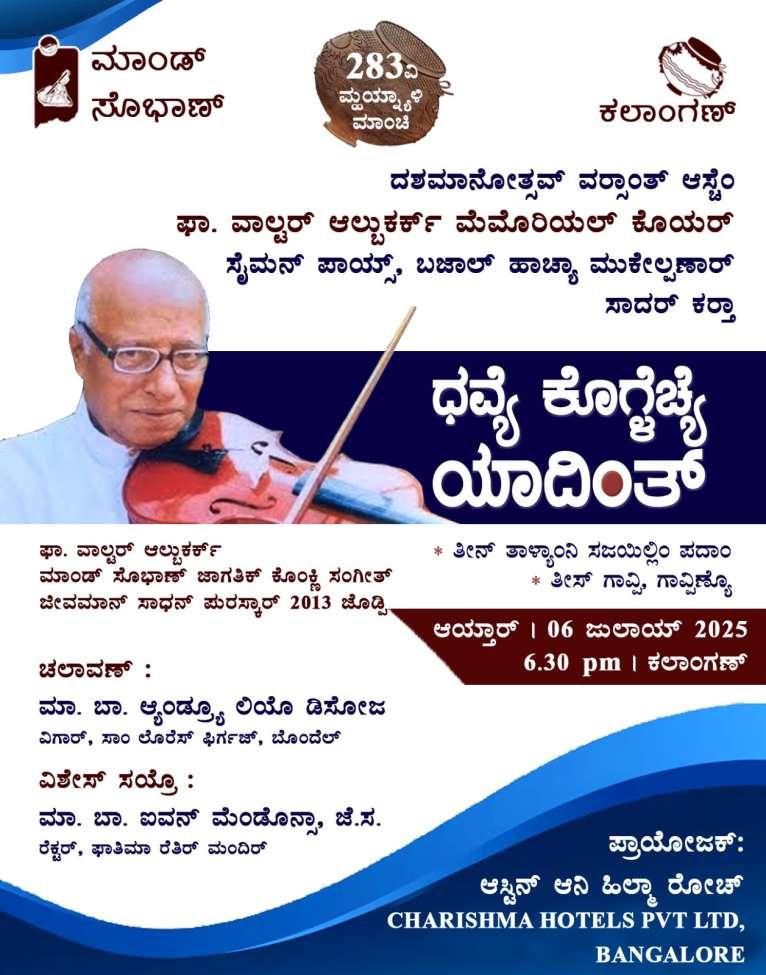
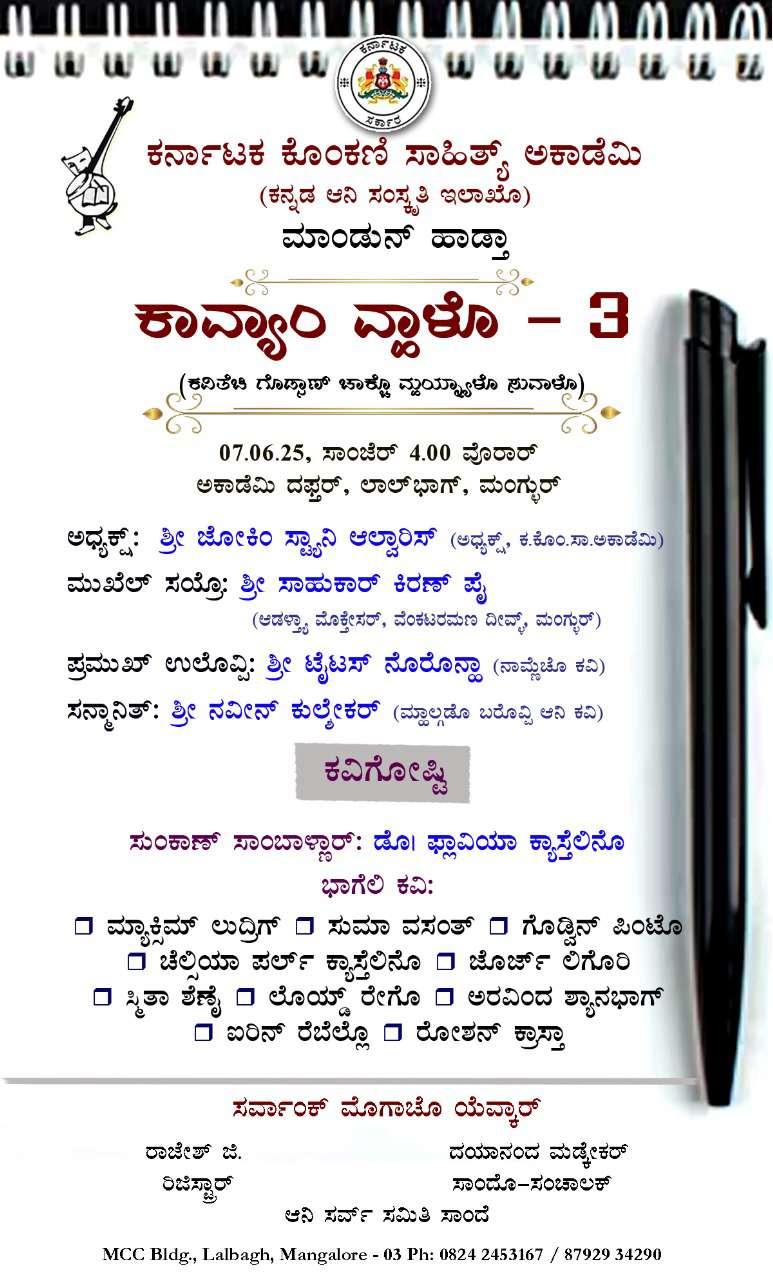
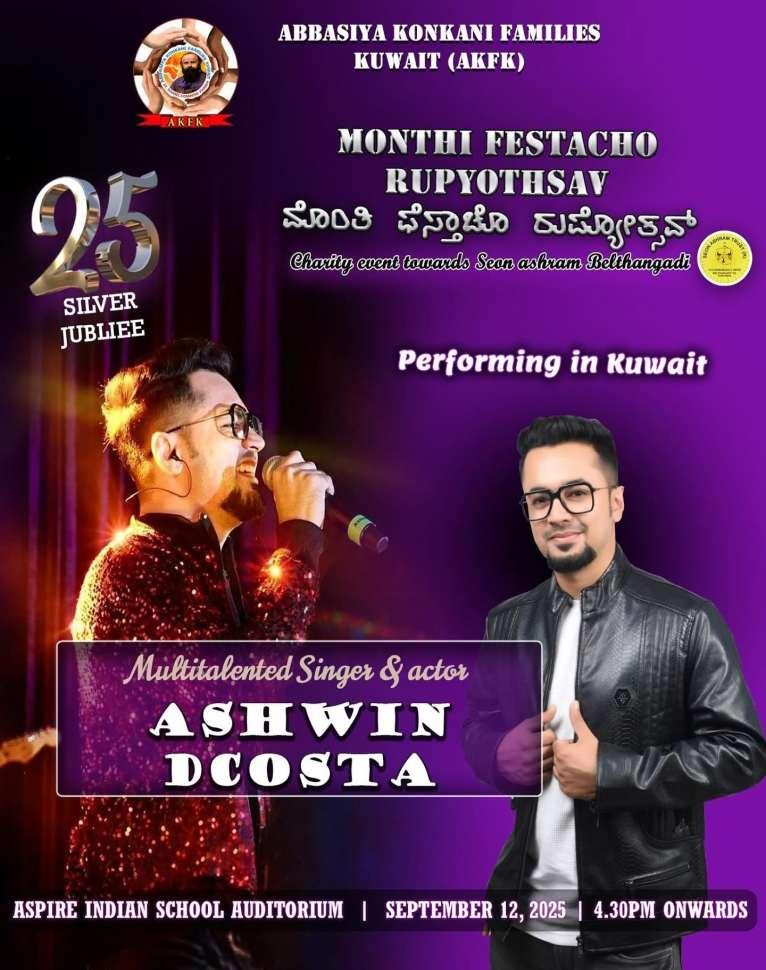
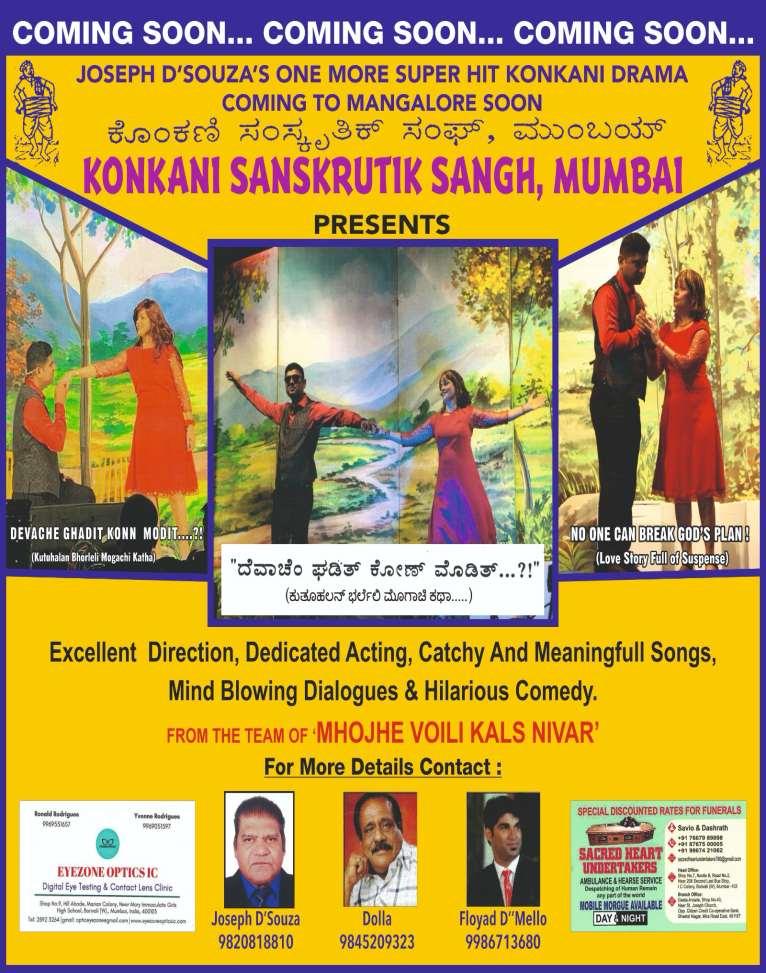









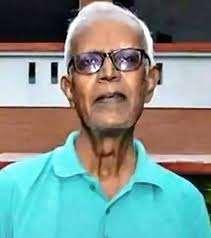

















































































































































































































































































































































































































? Navemruup aadinchaddethavn pyaant aathanhyaataathaavn kyaap polisaanchyaanhesnnak dilaan navem aadhuniknhesnnaruup kaanuun paalan karchyaant hennhesannkarith sudhraap?
















































































































- *Fr.Cedric PrakashSJ

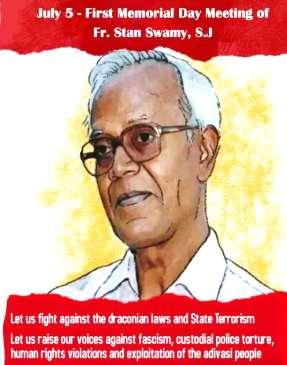
WhenFrStanSwamydiedon5July 2021, the world of truth and justice was shocked and saddened. Those who belonged to this group were convinced, that his death was not a natural one, but a pre-mediated institutional murder. Yes, he was killed – because the powerful and othervestedinterestshadnodoubt that he was a real nuisance to their

nefarious deeds. So he neededtobedoneaway with. Theirs was a meticulously crafted plan: to interrogate and harass him, to incarceratehiminTaloja jail under an extremely draconian law, the ‘Unlawful Activities Prevention Act(UAPA), to continuously intimidate him through the National Investigation Agency(NIA)evenwhilst he was imprisoned, to deny him (an ailing 84year-oldfrail,sicklyJesuit)amuch –needed straw-sipper, proper food andadequateMedicare;allthisand more! The sad part is that they succeeded in their brutal gameplan.StanSwamywaskilled!Heisa martyr! A martyr for justice! However, what his killers did not bargain for, is the plain truth, that
legends like Stan Swamy never die, they are immortal: they live forever in hearts, souls and minds of ordinarymortals!
Today,fouryearsafterhephysically left this earth, what does Stan Swamy mean to the legion of his admirers, his followers, those who were inspired by him and particularly,thoseforwhomhegave hislifefor…Hemeantandcontinues to mean different things, to different sections of society. Stan epitomised human values at their best and radiated them in his nonnegotiable commitment for a more just, equitable, fraternal and humaneworld!
One needs to take a cue from Stan Swamy’swordsjustbeforehisarrest on 8 October 2020. In a videomessage which went viral he said, “overthelasttwodecades,Ihave identifiedmyselfwiththeAdivasi peopleandtheirstruggleforalife ofdignityandself-respect…Inthis process,Ihaveclearlyexpressedmy dissent over several policies and lawsenactedbythegovernmentin thelightoftheIndianConstitution. I have questioned the validity,
legalityandjustnessofseveralsteps takenbythegovernmentandthe ruling class. If this makes me a ‘deshdrohi’,thensobeit.Weare partoftheprocess.InawayIam happytobepartofthisprocess.I amnotasilentspectator,butpartof thegameandreadytopaytheprice whateverbeit….I/wemustbeready tofacetheconsequences.Iwould justaddthatwhatishappeningto meisnotunique.Manyactivists, lawyers,writers,journalists,student leaders, poets, intellectuals and otherswhostandfortherightsof Adivasis, Dalits and the marginalised and express their dissenttotherulingpowersofthe country, are being targeted. Gratefultoallwhohavestoodin solidaritywithmealltheseyears.” Thesewordsgiveusaverypowerful insight into Stan Swamy – the Person,thePilgrim,theProphet Stan,thePerson:
One would need to write volumes onStantheperson.Hewasahuman parexcellence! All through his life he radiated compassion and concern for the other! He was selfless to the core! His focus was always ‘his people’; an approach which was people-centric: a much-
needed value in today’s world! He livedamong the people – the poor, theAdivasis.Heatetheirfood,sang their songs and danced with them. Hislifewasextremelysimple,tothe point of frugality! He lived his vow of poverty to the fullest and in a most edifying manner; his material needs were few; his actual possessions were even less. The media had a field day, when the ‘authorities’ came to ‘seize’ his possessions from his room in Bagaicha where he lived till his arrest! They got almost nothingwhich of course, made them a pathetic laughingstock! In his early days, Stan was a trainer, mentor, guide – inspiring hundreds of youths and others through social awareness programmes and to critically analyse what was happening in society; there are manytoday,fromacrosstheboard, who are and will always be grateful for the profound impact he left on their lives. Several of them today have a social concern only because theywereinspiredbyhim.ForStan, his heroes and motivators were the likes of Paolo Freire, Dom Helder Camara and Fr Pedro Arrupe. He read profusely and wrote a lot.
Vatican II and the faith -justice mandate which emerged from the 32nd General Congregation of the Jesuits,greatlyshapedStan’swayof proceeding: his thinking and his actions. Like Jesus his Master, he questioned and taught others to question, to bevisibleand vocal, to challenge all that is wrong and unjust in society and to respond constructively and positively to these issues. When he was imprisoned in Taloja jail, he wrote, “ontheotherhand,wesixteencoaccused (in the Bhima-Koregaon conspiracycase)havenotbeenable to meet each other, as we are lodgedindifferentjailsordifferent ‘circles’withinthesamejailbutwe willstillsinginchorus,acagedbird canstillsing .” Yes, Fr Stan Swamy was convinced that a caged bird could sing because he was a complete person who epitomised and radiated the best of human values! One rarely, sees such a persontoday!
Stan,thePilgrim: Pilgrims are those who walk, who walkwithothers,whowalkthetalkthey have a clear focus on their destination. They know where they
are going and for what. Like St. Ignatius(theFounderoftheSociety of Jesus, Stan was a Jesuit)), he was a pilgrim in the true sense of the word. He believed in movements: people on themove,just like in the Biblical‘Exodus’:thestrugglesofthe ‘people of God’ for a more just, equitable, dignified and humane life. He identified himself with and participated in peoples’ movements. Stan left no stone unturnedtoensuretheKingdom of God on earth belonged to all (particularly the sub-alternes) and that all would be together around thetableoffellowship.Forhimthat ‘kingdom’ was ‘kinship’- the readiness (attitude and action) to serveotherswithlove! ‘FratelliTutti’ (Brothers and Sisters All) as Pope Francis reminds us in his Encyclical. Like a true pilgrim, he lived a frugal life, unencumbered with baggage. His room in Bagaicha (now made intoaStanMemorialMuseum),had the barest necessities; it bore witness to the life of a man on the move–arealpilgrim.Standidallhe could to empower the Adivasis. He accompanied them in their strugglesandshowedthemtheway to a better future! Stan’s life as a
pilgrim should be a motivating factor today for all to get out of one’s comfort zones, institutionalised lifestyles and cosmetic band-aid approaches, which reek of tokenism and opportunism, and to be attune to the grim realities which the ordinary,poorpeoplefacetoday!In a world which is divided and fragmented Stan is a beacon: a pilgrimofhope!
Stan,theProphet:
A prophet whilst announcing the good news, must denounce all that is wrong, unjust and evil in society. One needs to take an unequivocal stand; to be visible and vocal. Stan, as an authentic disciple of Jesus, truly feared no one! He also shunned the hypocrites! He joined the Adivasis, the Dalits, other subalternsandcivilsocietymembers,in the struggles against the violation of laws in acquiring land for mega projects for mining (coal mining is rampant in Jharkhand and in other tribal areas today) and infrastructural development which flouttherightsofthedowntrodden and tribals. He tooka standagainst the wanton destruction of the ‘jal,
jungle,jameen’of the Adivasis. He consistently raised his voice in democratic,legitimatewaysagainst the state-sponsored violations of laws and the assault on the democratic rights of people, aimed at paving way for unrestricted exploitation of land and natural resources. He questioned the nonimplementationofthe5thSchedule of the Constitution why the Panchayats(ExtensiontoScheduled Areas) Act [PESA], was being ignored. He strongly expressed his disappointmentatthesilenceofthe Government on the landmark 1997 Samantha Judgment of the Supreme Court; he spoke out strongly against the half-hearted action of the Government on the ‘Forest Rights Act, 2006’. He expressed his apprehensions at the Amendment to ‘Land Acquisition Act 2013’ by the Jharkhand government which was a deathknellfortheAdivasiCommunity.He strongly disagreed with the setting up of ‘Land Banks’ which he saw as a calculated plot to annihilate the Adivasis. Through the ‘Persecuted Prisoners’SolidarityCommittee’he challengedtheindiscriminatearrest of three thousand young Adivasis
under the label of ‘naxals’ just because they questioned and resisted unjust land-alienation and displacement. Because of all this and more he made enemies- from among the powerful and vested interests;thosewhofeltthathewas athorn intheirflesh.Heminced no wordswhenhechallengedhisown, to stop over-institutionalisation, to stop catering to the privileged and elite sections of society (who have plenty of other possibilities and opportunities) and above all, to get out of the safety and security of one’s comfort zone! He was a visionary who took prophetic stands! He once said, “the Governmentcallsmea‘deshdrohi’ for defending the rights of the Adivasis. So be it!” Stan was a prophet of and for our times. He radiated an unparalleled prophetic courage and ultimately, like all genuine prophets, he too paid the ultimate, supreme price of being one!
There is a bust of Fr Stan Swamy in the garden of the Bagaicha, the Centre which he started in Ranchi. Etchedonamarblestonejustbelow this bust, are his incisive and
immortal words, “why truth has become so bitter, dissent so intolerable,justicesooutofreach… Yettruthmustbespoken,rightto dissentmustbeupheldandjustice muchreachthedoorstepsofthe poor.Iamnotasilentspectator!” StanSwamywasindeedamartyrfor justice, a pilgrim of hope and a prophet for our times. As we pay tribute to and try to emulate Stan Swamy; the person, the pilgrim and prophet – the only way we can genuinely do so, is by not being silent spectators to the terrible realities, the crimes against
humanity, which have engulfed our peopleandmanyofus,today!
3 July 2025
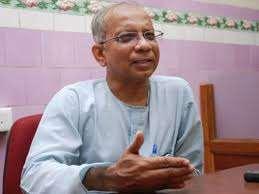
(*Fr Cedric Prakash SJ is a human rights, reconciliation and peace activist/writer.
Contact:cedricprakash@gmail.com)



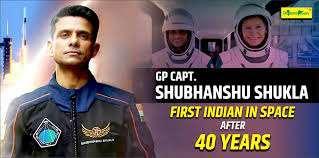
Guru
INDIA has just taken its cosmic giant leap. IAFs Group Captain Shubhanshu Shukla, a pilot, is onboard the SpaceX Crew Dragon spacecraft on a Falcon 9 rocket that shot off to space from Launch Complex 39A at NASA’s Kennedy Space Center in Florida. This isthesamelaunchpadfromwhichNeil Armstrong took off for the moon on Apollo 11 in 1969. Group Captain Shukla is the second Indian astronaut travelling to space, four decades after
Wing Commander Rakesh Sharma made the cosmic journey as part of a Soviet mission in 1984. The Indian Air Force pilot has been in quarantine for over a month to ensure he stays healthy.
Themissionsuccessfullyliftedofffrom NASA's Kennedy Space Center in Floridaon25June2025at12:01IST.It docked with the ISS on 26 June 2025 at 16:01 IST. Quietly making history, Shukla entered the ISS at 17:44 IST. A few minutes past 19:00 IST, as the formal welcome ceremony for the Ax-
4 crew unfolded at ISS, Mission Commander Peggy Whitson gave him his pin, designating him astronaut number634.
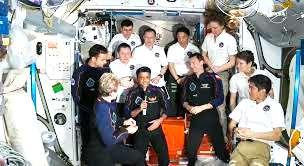
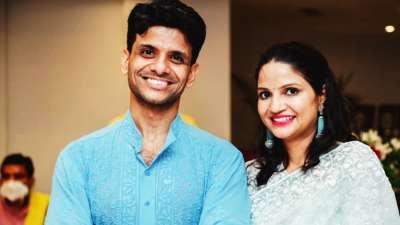
Born: 10 October 1985 (age 39 years), Lucknow, Shukla is married to Kamna Mishra, a dentist by profession, who was Shubhanshu classmate at school. The couple has a son. In his leisure time, Shukla enjoys engaging in physical exercise and reading sciencerelated books. He has recently developed an interest in reading horoscopes, despite identifying as an agnostic.
Astronaut Shukla scripted history by embarking on a space travel mission, along with three others from the U.S.,
Poland, and Hungary to the InternationalSpaceStationaspartofa commercial mission by Axiom Space. Thetraditionofselectingpilots as astronauts’ dates to the very dawn of the Space Age. In fact, the first human to venture into space in 1961, cosmonaut Yuri Gagarin was a trained fighter pilot. Similarly, NASA’s first astronaut, Alan Shepard, was also a pilot from a military background. This choice was not accidental. In those days, space was seen as a natural extension of the sky and rockets were thenextfrontierofaviation.Itwasonly logical, then, that the first humans to venture beyond Earth were experienced pilots. These people are already accustomed to navigating high-stress environments at extreme altitudes and speeds.
Pilots, especially those from military backgrounds, bring a powerful combinationofphysical,technical,and psychological capabilities that align perfectlywiththerealitiesofoperating in space. To begin with, pilots are trained in systems thinking and realtime decision-making. In aircraft, especially fighter jets, they must interpret complex data, monitor multiple subsystems simultaneously, and respond to emergencies within seconds. This mental agility and
situational awareness are directly transferable to the cockpit of a spacecraft, where rapid decisionmaking can mean the difference betweenmissionsuccessandfailureor lifeanddeath. Anexampleofthiswas seenduringthefirsthumanlandingon the Moon. As the Apollo 11 Lunar Module Eagle descended toward the surface, Neil Armstrong, relying on his fighter piloting instincts, realised the onboard computer was guiding them into a hazardous boulder field. With fuel running dangerously low, he took manual control and guided the moduletoasafelandingsite,touching down with barely 20 seconds of fuel remaining.
NeilArmstrongandBuzzAldrin(alsoa fighter pilot) faced another challenge after landing. A critical circuit breaker switch needed to ignite the ascent enginebroke.Inthatmomentofcrisis, BuzzAldrinusedafelt-tippentopush the circuit manually, allowing the enginetofireandensuringtheirreturn from the Moon. It was a simple action with life-or-death consequences, made possible by the resourcefulness that comes with pilot training.
Pilots are physically well-prepared for the extreme forces of space travel. Fighter pilots regularly train to
withstand accelerations of 5 to 9 g, conditioning their bodies to stay conscious under intense pressure.
Beyond the technical and physical, pilots are also trained in Crew Resource Management (CRM). This includes communication, decisionmaking,andteamworkunderstress.In the high-stakes, close-quarters environment of a spacecraft, these interpersonalskillsareascriticalasany piece of hardware or software onboard.
Perhaps no mission better illustrates this than Apollo 13. When an oxygen tank exploded en route to the Moon, the crew, Jim Lovell, Jack Swigert, and Fred Haise (all three fighter pilots), faced severe power loss, freezing temperatures, and limited water. Yet their calm behaviour, shared responsibility, and piloting expertise allowed them to reconfigure the spacecraftontheflyandguideitsafely back to Earth. But what if you dream of going to space and you are not a pilot? Don’t worry. You don’t need to be a pilot to become an astronaut anymore.
But over time, space missions changed. They became longer, more scientific, and more focused on
learning about space. As the goals of space missions expanded, so did the people choose for them. That is when mission specialists were introduced. These astronauts aren’t selected for theirflyingskillsbutfortheirexpertise inscience,technology,engineering,or medicine.Theyaretrainedtocarryout complex experiments, operate special instruments and support the mission. Today,astronautscomefrom all kinds of backgrounds. About 40% of all astronauts who have been to space were from non-fighter pilot backgrounds - and that share is now increasing. Some doctors study the impact of microgravity on human health in space, engineers who fix solar panels in ISS, teachers who inspire students, and scientists who run experiments in zero gravity.
After multiple delays, Elon Musk's SpaceX launch vehicle with Crew Dragon spacecraft atop a Falcon-9 rocket blasted off from the Kennedy Space Center in Florida at 12:01 pm (IST)onJune28,2025carryingmission pilot Shukla, former NASA astronaut Commander Peggy Whitson and mission specialists Tibor Kapu of Hungary and Slawosz UznanskiWisniewski of Poland. "Kamaal ki ride thi (It was an amazing ride)," Mr. Shukla said 10 minutes after the
Dragon spacecraft was placed in orbit around the Earth at an altitude of 200 kmaspart of the AxiomMission 4(Ax4).
The four-member crew of the Axiom4 Mission is headed to the International Space Station. During the fortnight-long mission, they will conduct 60 scientific experiments, sevenofwhichhavebeenproposedby Indian researchers. Group Captain Shukla is likely to interact with a VIP from space.The Axiom-4 launch was delayedmultipletimesduetoweather and technical glitches. June 25 is the sixth date NASA announced. In a recent media interaction, Group Captain Shukla said, "I carry with me not just instruments and equipment, but the hopes and dreams of a billion hearts."
Hours before his historic journey, Group Captain Shukla sent a message to his family: "Just wait for me, I’m coming." The Axiom-4 crew is scheduled to dock at the International Space Station around 4.30 pm tomorrow, following a roughly 28hourorbitaljourney. TheIAF,inapost on X, said Astronaut Shukla has set forth on a landmark space mission, carrying the pride of the nation beyond Earth. It also said, "This is a
dèjà-vu moment for India, 41 years after the mission of Sqn Ldr Rakesh Sharma,whofirstcarriedourTricolour beyond Earth. Being more than a mission- it isa reaffirmationof India's ever-expanding horizon."
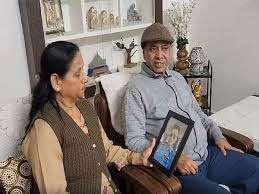
Group Captain Shubhanshu Shukla, the first Indian on the International Space Station (ISS), spoke to Prime Minister Narendra Modi on Saturday June 29, 2025 and described his view of Earth as “borderless” and India as looking “much larger” than how it is projected on maps. ***“India looks beautiful and much larger than how it appears relative to other countries on a map. The one-ness of the world a sentiment that we endorse even in India is very evident from here. No countries exist, and ultimately, we are all part of humanity. The earth is our home and we are all its citizens,” he told the Prime Minister in a conversation that was also broadcast
for public viewing on YouTube.Mr. Modi told the astronaut that his space travel marked the beginning of a new era and was the first step towards Mission Gaganyaan, India’s own human spaceflight project. “Shubhanshu, today you are the farthestfromthelandofIndia,butthe closest to the hearts of every Indian,” he said.

In a roughly 20 minute-long conversation, Group Captain Shukla who appeared on a screen with the tricolour in the background and string of paper flags from other countries festooned around him, answered questions from Mr. Modi on the food hehadcarriedalong,theexperienceof weightlessness, the experiments he would be performing, what message he had for Indians on the earth. ‘Namaskar from space’: Astronaut Shubhanshu Shukla greets from capsule before reaching ISS, “Right now, I have tied my feet to the groundtobeabletospeaktoyou,else
I’lljustfloatupwards,”Mr.Shuklasaid, eliciting an amused chuckle from Mr. Modi. “Eating, drinking...everything feels different, and despite all the training and being fully prepared for what to expect, it takes some time to get used to everything.” Mr. Shukla told the Prime Minister that he had brought with him gajar ka halwa, moongdalhalwaandaamras(mango nectar) and that they were relished by his fellow astronauts on the space station. The Prime Minister told the Lucknow-born astronaut that his historic journeywasnotjustlimited to spacebutwouldaddfreshmomentum to the march towards Viksit Bharat (developed India). “We must take Mission Gaganyaan forward. We must build our own space station. And we must ensure that an Indian astronaut lands on the Moon.
Astronaut Shubhanshu Shukla’s family met U.P. CM Adityanath after his ISS entry “Your experiences will play a crucial role in all these future missions. I am confident that you are diligently recording every bit of your experience,” he added. Mr. Modi conveyed his wishes and said he was looking forward to Mr. Shukla’s safe return to earth.
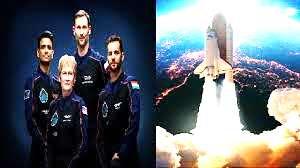
preparations that lasted months. Mr. Shukla is one of four astronauts aboard the Axiom 4 mission, a commercial space flight for which India has paid ₹548 crore. For three of them,includingMr.Shukla,thisistheir maiden trip to space. During their 14day stay on the ISS, Mr. Shukla is expected to observe and record experiences of being in space to supplement India’s indigenous Gaganyaan mission ISRO’s maiden trip to space currently scheduled in 2027.
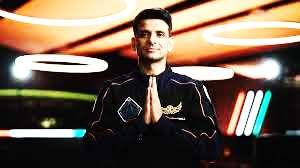
Mr. Shukla docked on the ISS on June 29, after several weeks of delays and
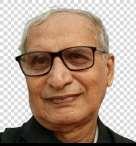
Compiled:IvanSaldanha-Shet.



Ingredients:
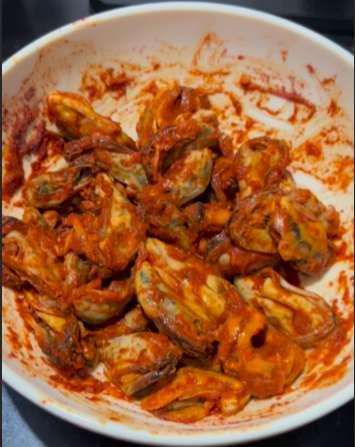
4.Hing/AsafoetidaWater- 3tsp
5.RiceFlour- 2 tbsp
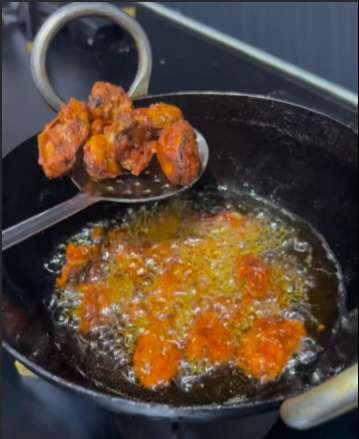

Method:
1.First, Clean theNeeli 4-5 times in water.
2.Then in Vessel addwater tillthe blue/mussels dip in water andboil for10 to15 minutes
3.Takethe blue/mussels outanddeshell them andremovethe dirt fromit.
4.Then in abowladdthe blue/mussels,addsalt andred chilipowder andmixwell.
5.Then addhing/asafoetidawater toit andmixwell.
6.Addrice flour,mixandkeep it asidefor 15 minutes.
7.In a fryingpan addoil andheat it up.
8.Addthemarinated blue/mussels tothe oil and fry deep untilfully cookedandservehot.

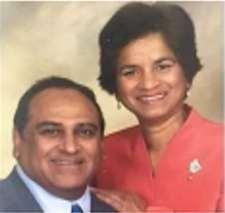
PhilomenaLawrence
Gilbert A.Lawrence
Luís Vaz de Camões (1524-80) and Winston Spencer Churchill (WSC 1874-1965). (FromLast week)
Since WSCand Camõesspentmost of their time in the clubhouse, they were not exposed to the rich culture, heritage, and history of the natives.Certainly, their writings do not include any details of such information, perhaps also because they did not have access to any literatureaboutIndiawrittenintheir native language. Many describe their colonial life as single men in a sea of natives; spending time with
the whites, where dining with white womenappearstohavea“civilizing effect.” As a result, most colonials, after their tour of duty, returned to England as ignorant about India as when they arrived, disappointed andfrustratedwiththeirexperience in the colony. WSC notes that “Twenty years as a soldier in India would not have provided any knowledgeworthknowingofIndian affairs.” Some archaeologists, however, discovered the remains of the 3000-year-old Indian Valley
Civilization; others investigated the origin of the Indo-European language and the migration of peoples across the sub-continent. Those with an interest in archeology, history, and languages had much to review in the Raj’s extensive medieval history, monuments, other ruins, and epigraphic study of inscriptions, manuscripts, and quasi-historical documents.
Both the literary giants lacked a grasp of or interest in Greek and Latin. Even so, in London, WSC presented himself as knowledgeable about the Indian situation and was acclaimed by his partyasthe“heaven-bornleaderof the party on India.” His lack of informationon Asianaffairsdidnot prevent him from presenting himself as an authority on empirerelated bills or motions that came before parliament or at cabinet meetings. Thanks to a rich collection of letters WSC regularly wrote to his mother and his autobiography, he comes across as finicky, a whiner, and opinionated. Hisdesireforself-expressionmeant he could chew your ear off in a
socialsetting.Hewasadvisedbyhis teacher and counselor Rev JEC WeldoninaletterdatedSeptember 1896, a year after his father died: “Above all, my dear Churchill, think more of others than yourself, be ready to learn from others that are below you, and keep your conscienceasrestfulasyoucan.”
While his cavalry regiment was stationedinthehillstationforeight years,WSClivedinIndiaforonly1.5 years.Hiswind-sweptspiritgothim travelingtovariouspartsofIndia;to Afghanistan for a ringside seat in the Anglo-Afghan skirmish against the Pathan tribes of SWAT valley (which led to his first novel – The storyofMalakandFieldForce), two trips to London to lay the groundwork for his post-military career, and a trip to Egypt and Sudan (for the Mahdist War, which inspired another novel). His final experience with an invasion involved the Second Boer War in 1899. Officers in the EE were expected to spend two or three hourscompletingdailychores;they were free to devote the rest of the time to personal pursuits, including composing literary and poetic works.CamoesandChurchillshared
a voracious quest for background knowledgeandpoliticalfacts,which they learned through solitary and untutored reading, followed by personal analysis and commentary. AsWSCdescribedtheprocess,“The greatofficeofthestate(theRaj)had to be filled out of the scrappy remnants of the Liberal Peers (in London).”
The official activity involved polo, horse racing, and maintaining Orderlyoffices.Therestofthetime, they vegetated or studied some self-selectedtopicofinterest.WSC’s entire recreation time was spent playingpolo,despitehisinjuriesand illnesses.Herealizedthathispathto risingintheranks,eventoclaimthe vacatedancestralseatinparliament, layinexcellinginmilitarymattersor politics. To his credit, WSC requested his mother to ship him volumes of books on GB politics, whichhestudiedingreatdepthand withdiscipline. Asamemberofthe upper crust of GB society, he championed the prevalent construction of Social Darwinism; the logical consequence of that theory resulted in the moral and legal justification of the ever-
expanding empire. Within it, the imperial Anglo-Saxon race was predestined by moral character to rule the world. The dominance was packaged as being altruistic. In other words, exploiting the people was presented as elevating and protectingthenatives,aclaimmade bynoneotherthanRudyardKipling, the Nobel Laureate of the period. GB’sSocialDarwinismconstructwas also used by elements of the Nazi regime and other right-wing regimes throughout the world including presently by the rightwingpoliticalpartiesacrossEurope.
As an insightful politician, WSC created and highlighted litmus test issues, which set him apart from other candidates, whether Tory, Conservative, Liberal, Socialist, Labor, or Unionist. In speeches, he preferred using the termTory Democrat,which could twist and turn the subtle nuances of Irish politicsandHomeRule.Evenlosing an election was no sweat. He was convincedthattherewereplentyof feeding slots at the government trough, and the swine would get theirfill,onewayortheother. (Tobecontinued)


At Fort Kochi’s South Beach, heavy monsoon waves have unearthed what experts believe are the longlost remains of Fort Emmanuel the first European fort in Asia, built by the Portuguese in 1503. Marine geologists from Cochin University say the exposed ruins, made from laterite rock and surkhi (an ancient brick-lime mix), could be from the original Portuguese fort or possibly a Dutch reconstruction. Either way, it’s reigniting global curiosity. Kochi’s colonial legacy, it closely connects with Kanara and Goa historytoo.
This comes just a couple of years aftersimilarartefacts,believedtobe from a Portuguese church, were foundduringWaterMetroworkson Fort Kochi’s northern coast. Now, with discoveries both north and south of Fort Kochi, researchers across the globe are calling in — eagertodiveintothisburiedpast.If confirmed,FortKochicouldsoonbe
declared a colonial renaissance heritage site, marking its place on theworldmapyetagain.
Fort Kochi is rich in heritage and culture and is a prominent tourist destination for both domestic and international travelers- being rankedasninthamongthetop25in National Geographic’s Top Tourist Destinations To Explore. The port atKozhikodeheld a superior economic and political position in medieval Kerala coast, whileKannur,Kollam, andKochiwere commercially important secondary ports, where thetradersfromvariouspartsofthe world would gather.Fort Kochi was a fishing village in theKingdom of Kochiin pre-colonial Kerala. The Portuguese arrived atKappadKozhikodein 1498 during theAge of Discovery, thus opening a direct sea route
fromEuropetoIndia.The territory that would be later known as Fort Kochi was granted to thePortuguesein 1503 by theRajah of Kochi, after the forces ofAfonso de Albuquerquehelped him fight the forces ofSamoothiriofKozhikode. The Rajahalsogavethempermissionto buildFort Emanuelnear the waterfront to protect their commercial interests. The first part ofthenameFort Kochi comesfrom this fort, which the Dutch later destroyed. The Portuguese built their settlement behind the fort, including a wooden church, which was rebuilt in 1516 as a permanent structure, today known as theSt FrancisChurch.FortKochiremained in Portuguese possession for 160 years. In 1683 the Dutch captured the territory from the Portuguese, destroyed many Portuguese institutions, particularly Catholic including convents. The Dutch held Fort Kochi in their possession for 112 years until 1795, when the Britishtookcontrolbydefeatingthe Dutch.ForeigncontrolofFortKochi ended in 1947 with theIndian independence.
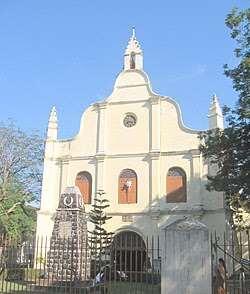

A mix of old houses built by the Portuguese, Dutch and British in these colonial periods line the streets of Fort Kochi. St Francis Church was built in 1503 by the Portuguese as a Catholic church.Vasco da Gamawas once buriedinthischurchwhichnowfalls under theChurch of South Indiaand is one of the national monuments. The Catholic Diocese of Cochin was established under Portuguese Padroadoin 1558 with itsheadquartersinFortKochi.Santa Cruz Basilica, also built by the Portugueseinthe16thcentury,was later destroyed by the British and rebuiltneartheendofthe19th
century.From this period there are other residential buildings and hotels such as theOld Harbour House, some of which have been renovatedinmorerecenttimes.The landmark that causes more public and visitor interest is a series of
precolonialChinese fishing netson the waterfront, believed to have beenintroducedbyChinesetraders in the early 14th century. Our local histories needsupport and forward leaps.
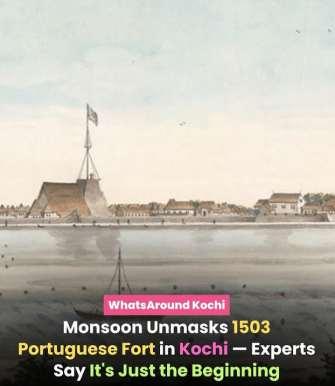
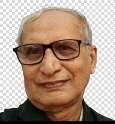





Rasquinha

Mangaluru


Mangaluru, July 4: The Don Bosco Mini Hall in Mangaluru was abuzz on the evening of July 3 as Mohmvacho Swad, a Konkani poetry anthology penned by noted editor, writer and poet Avil Rasquinha, was officially released amidst a gathering of Konkani writers,poets,familyandfriends.
In his warm welcome address, Avil Rasquinha expressed gratitude to the MDVK Mission for its unwavering support to Konkani literature.Hemadespecialmention
of Michael D’Souza, founder and promoter of Vision Konkani, acknowledging his generous contributions to various Konkani projects.

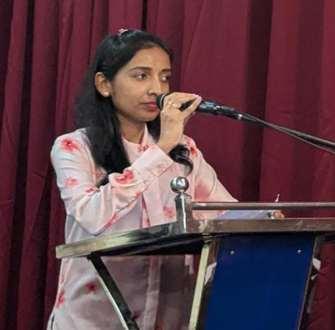
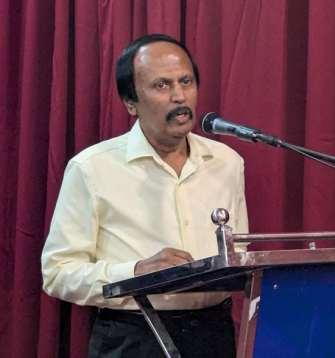
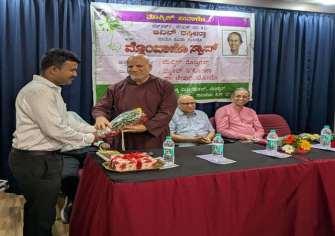
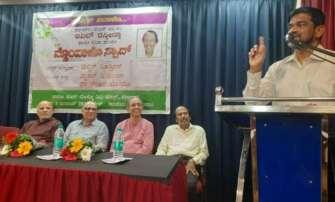
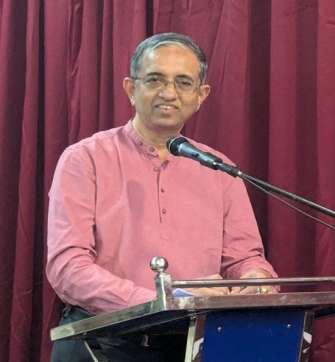
“There are many with great wealth, butonlyafewwithgreatwealthand a great heart. Michael D’Souza is truly one of them,” Avil said, drawing applause from the
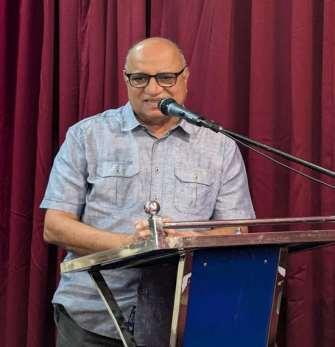
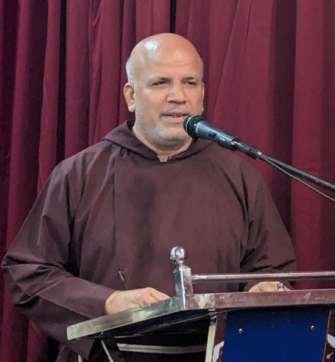
audience. He also offered a floral welcome to the dignitaries on the dais.
The anthology was introduced by noted Konkani writer Henry M Pernal, who provided insights into the poetic themes of the book and elaborated on the broader


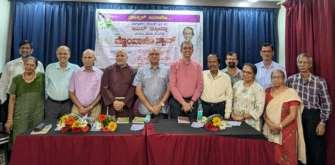
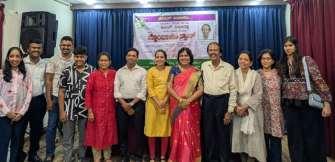
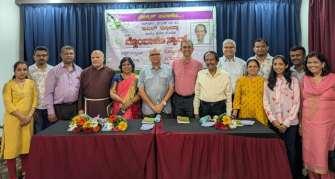
vision and efforts of the MDVK project.
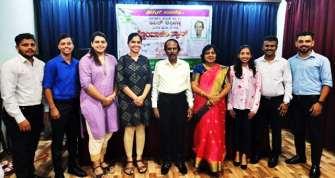
Renowned poet and convener of theKonkaniAdvisoryBoard,Sahitya Akademi, New Delhi, Melvyn Rodrigues officially released the book and lauded Avil Rasquinha’s tireless dedication to the Konkani literarymovement.
“Avil led Kannik magazine for 20 years, showcasing the works of countless writers. Today, it is a proud moment as his own poetic voicetakescenterstage,”Rodrigues remarked.
Chief guest Michael D’Souza emphasised the importance of publishing literary works. “Many writers write, but if their writings remainunpublished,itislikeachild who dies in the womb and never sees the world. The pain of such a writer is like that of a mother,” he said.
Fr Chetan Lobo, editor of Sevak monthly, reflected on Avil Rasquinha’sinfluenceduringearlier decades. “Avil was a strong pillar andasourceofinspirationtomany,
includingmyself,”heshared.
The event opened with a soulful prayer song by Carol Rasquinha. MarietteRasquinhadeliveredavote of thanks, expressing appreciation toeveryonewhocontributedtothe successoftheprogramme.
The event was skillfully compered by Jio Agrar, who ensured a
seamless flow of the programme, concluding the evening on a punctualandgracefulnote. Mohmvacho Swad is a significant addition to Konkani literature, reflecting the emotional and cultural depth of the language through the poetic lens of Avil Rasquinha.


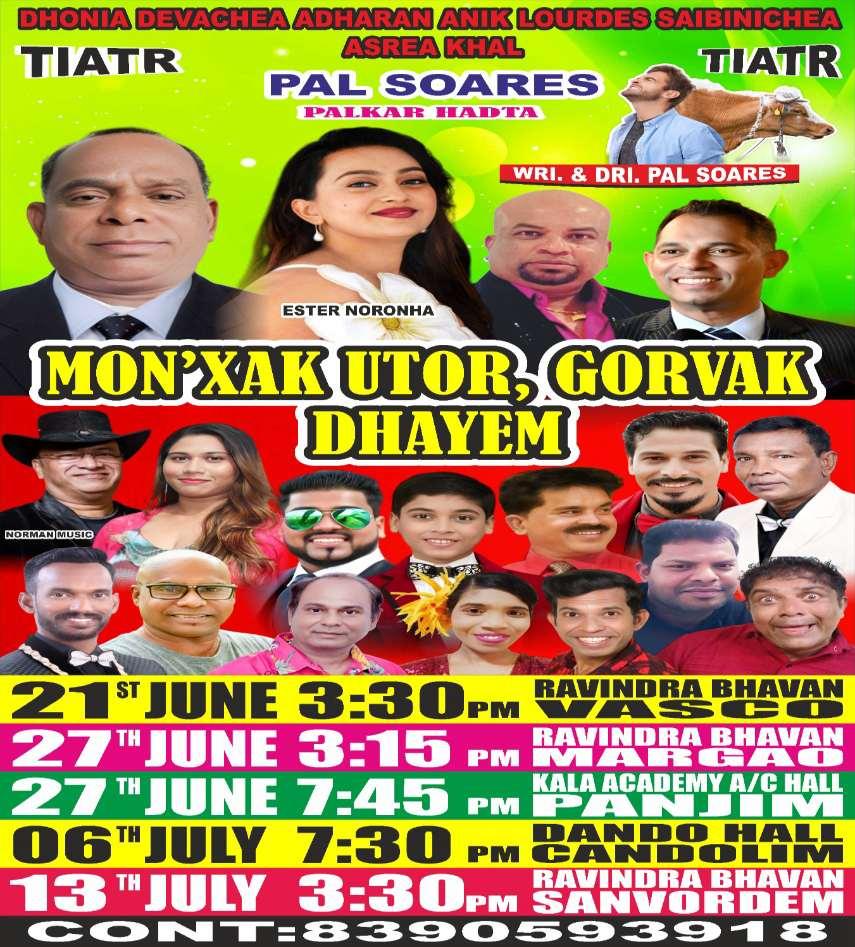
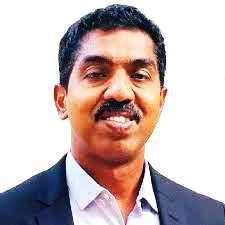
ByPramodDSouza
President - Kanara Entrepreneurs, BangaloreChapter Inmyjourneyasanangelinvestor,I have spoken to more than 700 technology startup founders from Bangalore and other cities across India. I am also connected to thousands more through the LinkedIn platform. Out of all these interactions, one question has continuedtotroubleme:Howmany of these founders come from the Mangalorean Konkani Catholic community?
The numbers are, frankly, shocking. Hardlyanyonefromourcommunity seems to be taking the plunge into theentrepreneurshipworld.
Many of us watch shows like Shark Tank, where enthusiastic entrepreneurs pitch their ideas to
investors. But have we ever seen anyone from our community standing on that stage, showcasing theirinnovation?
Why are we Christians especially Mangalorean Konkani Catholics lagginginthiswaveofstartups?
This is not a small or passing phenomenon. Bangalore is the startup capital of India, the place where so many of the country’s unicorns startups valuedat overa billion US dollars have been built. The city is also home to numerous “Soonicorns”,venturesthat are well on their way to reaching unicorn status.
According to NASSCOM, a government-supported body that tracks this ecosystem, Bangalore alone is home to more than 20,000 startups, with 200–300 new companies being registered every year.Inacitywithsuchavibrantand fast-growingstartuplandscape,itis concerning that so few of these companies have Christian founders andevenfewerfromour Mangalorean Konkani Catholic community.
Why does this matter? Because startups today are not just businesses. They are engines of innovation, job creation, and societal transformation. They are solving real problems, everything from financial inclusion and healthcare,accesstoeducationand sustainability.Whenourcommunity doesnotparticipate,wemissouton shaping the future, creating wealth, and setting examples for the next generation. It is time to ask ourselves some toughquestions:
• What cultural, social, or psychological barriers are holdingusback? Haveweplacedtoomuchemphasis on traditional, “safe” careers, to the detriment of entrepreneurial ambition?
• Do we lack role models and mentors who can show young people the path to building a company?
• Are we so risk-averse that we cannot imagine trading the security of a job for the uncertainty of entrepreneurship? This is not about blaming anyone.Itisaboutrecognizing
a gap that urgently needs attention. Ourcommunityhasalwaysexcelled in academic and professional fields doctors, engineers, accountants, bankers, managers. But the world has changed. Today, entrepreneurship is not an alternative; it is a vital force driving India’s growth story. We cannot afford to sit on the sidelines while other communities and regions seizetheopportunitiesofthisera. Ifwewanttoseemoreofouryouth on the stages of Shark Tank, building unicorns, or creating startups that make a difference, we must start by changing mindsets, building support systems, and celebrating those few trailblazers amonguswhohavedaredtotry. It starts with awareness. It grows with encouragement. And it succeeds when our young people believethatentrepreneurshipisnot onlyacceptable,butalsorespected, valued,andnecessaryforthefuture. The Federation of Konkani Catholic Associations (FKCA), which brings together all Mangalorean Konkani Catholic associations worldwide, has an important role to play in creating greater awareness within
our community, especially among parents. Through its affiliated associations, FKCA could take the initiativetoorganizetalks,seminars, and panel discussions on entrepreneurship, equipping young people to make well-informed career choices. It is worth acknowledging the pivotal role played by FKCA in 2008 when it facilitated the establishment of Kanara Entrepreneurs, Bangalore (KE), in collaboration with KE, Dubai a not-for-profit organization dedicated to supporting entrepreneurs from the Kanara region, through networking and mutual growth. Since then, KE has flourished into a vibrant community of over 500 entrepreneurs representing a diverse range of industries. Today,
KE proudly operates chapters in Dubai,Bangalore,Goa,andavirtual chapter to connect members globally. However,theinvolvementofyoung people from our community remainslimited. Thetimeisripefor FKCA,itsaffiliatedassociations,and KE to forge stronger partnerships and actively collaborate to inspire, mentor, and empower the next generation of entrepreneurs within ourcommunity. (The author is an angel investor, technology leader, and startup advisor. He also serves as the President of Kanara Entrepreneurs, Bangalore Chapter. All views expressed are personal. He can be reached atpresident.blr@keglobal.orgoron WhatsApp+919845787003

Points to Ponder, July 2025

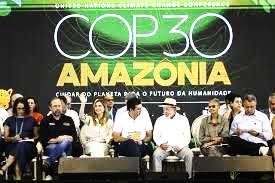
Even as we head into COP30 (30th Conference of Parties) at Balem, Brazil, multilateral climate action is at crossroads. Negotiations on contentiousissuesliketransitioning away from fossil fuels and obligations of developed countries to provide climate finance to emergingeconomieshavebeenput on the back burner, indicating lack of interest in large, developed countries in appreciating and preempting the looming climate crisis despite being historical polluters. OnewondersifCOPsarereducedto a game that is taking humanity nowhere! But as Sathya Raghu, Cofounder of Soul Forest and Kheyti suggests, the solution likely lies in
every community examining if the kind of development that we are pursuingisultimatelydestroyingus. As he says, GDP gave us the rocket ship. But we are flying blind! We have been selling a story. Growth means success. If the number goes up, everyone wins. But what if that story is broken? Here’s the thing aboutGDP.Itwasconstructedinthe 1930s, in a world short on labour and machines, not nature. The goal back then? Reboot the economy. GDP did its job. But it doesn’t see the world we live in now. Burn a forest?GDP goesup.Bleachacoral with toxic effluents? GDP goes up. Overfish and destroy the oceanic carbon sinks? Still, it’s up. The ecosystem doesn’t count. Biodiversity doesn’t count. Carbon sinks, flood buffers, natural disease regulators – none of it shows up. If it’s alive but unbought like the “clean”airwebreathe,GDPignores it (at least till the elite are felled by pollutedair!).Wemeasureprogress
by what we produce but ignore what we destroy. We gain tech but lose stability with countless commuters gasping for clean air in daily traffic snarls even as their travel gives out carbon monoxide and dioxide, adding to the already cripplinglevelofgreenhousegases. We live longer but feel worse. The numbers tell one story, another planet.SowhydoweclingtoGDP?
Because it rewards extraction and it’ssoconvenient. And, ofcourse, it works; for people already winning. But why don’t we humans, ostensiblythemostintelligentofall species,seethewritingonthewall?
Or are we the stupidest species on earth?
As Yuval Noah Harari says, humans are great at solving short-term problems, not slow-motion collapse. GDP keeps the short-term machine humming even as the long-term system collapses. Well, there’sa side showthat’sattracting someattention.WehavenowGreen GDP, Happiness Index et al. However, it doesn’t stick with the prevailing myopia in policy making.
Nevertheless, this work-in-progress needstobefurtherworkedon,with more determination and imagination.Becausefirstprinciples are simple. The purpose of an economy is to help people survive and thrive. If it doesn’t account for the ecosystem we depend on, it is not helping us survive, leave alone thrive. If nature stays invisible to money, it stays invisible to decision makers. But there is a shift, yet marginal. People are beginning to rewritethestory.

New Zealand’s Wellbeing Budget tracks ecological and social health, not just growth. UN’s SEEA (System of Environmental-Economic Accounting) framework helps
countries account for nature like they do for capital. Over 70 countries now price carbon. The EU is testing biodiversity credits. The UK’s Dasgupta Review stated what shouldhavebeenobvious:Natureis an asset, and we are mismanaging it. These aren’t hypotheticals, but data points in a new story – one where survival matters more than output. India cannot afford to miss thisturn.Itsgrowthisreal.Soisthe risk.GDPneednotbescrapped,just stoptreatingitlikegospeltruth.Tax destruction, reward restoration. If wedon’tmeasure whatmatters, we lose what matters. And when we notice it, it’ll be too late. The old storygotushere.Itwon’tgetusout. Timetowriteabetterone. Itcouldbeastorythatmaywelltake us to the 2050’s where the planet begins to heal. After decades of degradation, climate policy would
havefounditsfootinghelpedalong by public pressure, private innovation and hard evidence of suffering. The Arctic has changed, andoceansarenotwhattheywere. But forests have grown back in places once thought lost. Urban jungles and rewilding projects dot thelandscape.Carbonistrackedlike currency. Biodiversity is no longer an afterthought. Human beings are nolongerthemeasureofallthings, but part of the broader planetary calculus.2050,hopefully,willnotbe afinishlinebutapointintherising spiral.Manyofusmay notbethere to witness the healing planet. But many younger souls will be there, both as participants and as chroniclers of the rhythms of the time.
Norbert Arunanjali Securities Poonam Anand Nikethan, Ground Floor, 8th cross, Gandhinagar, Urwa Mangalore - 575003



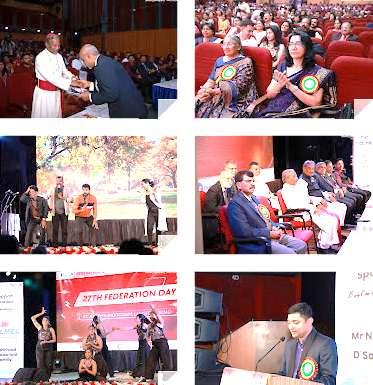
Bengaluru, June 29, 2025 – The Federation of Konkani Catholic
Associations (FKCA) hosted its 27th Annual Day celebrations with great


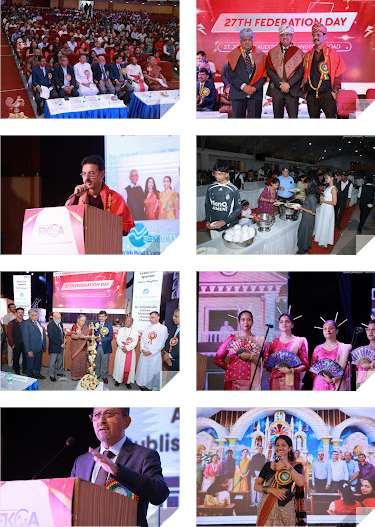
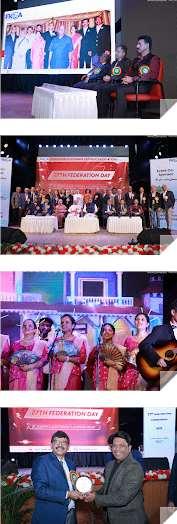

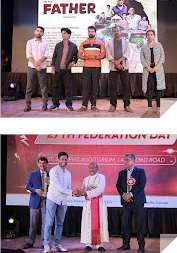


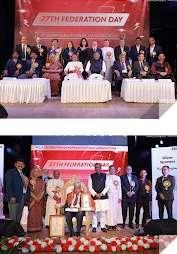

enthusiasm at St. Joseph’s University, Langford Road. The eventdrewalivelyandappreciative crowd.
Theeveningopenedonahighnote with a rib-tickling comedy show by Nellu Permannur and teamComedyCompany,settingthetone
for an evening filled with laughter and cheer. Performing in their signature comic roles Nellu Permannur as Nellu, Lancy Bantwal asLancy,MariaJoyceVamanjooras
Maria,andSandeepMascarenhasas Sandeep—the team delivered a delightful act that was met with widespread admiration and hearty laughter from the audience. The performance was enhanced by background music from Raveen Martis, while Joseph Monteiro providedcrucial backstagesupport. The show was elegantly compered byShainyPinto.
The FKCA 2025 Annual Day formal celebrations began with emcee Kiran D’Souza taking the stage. He introducedthemembersofKonkani SamudaiJayanagar,whoperformed an elegant welcome dance. Their colorful and graceful performance setafestiveandheartwarmingtone fortheevening'sfestivities.
This followed by the ceremonial lighting of the lamp by dignitaries Smt. Margaret Alva, Archbishop
Most Rev Dr Peter Machado, Dr Fr
Victor Lobo SJ, Special Guests
Valerian Fernandes, Mark D’Souza, ErrolFernandes,RobertCutinhaand Silvian Noronha - Present and Immediate Past Chairmen and Vincent D’Souza - General Secretary.
RobertCutinhathentookthedaisto provide an insightful overview of FKCA, outlining its founding principles and ongoing objectives. He also spoke warmly of the honor of having Archbishop Rev Dr.PeterMachado grace the occasion, which was followed by a heartfelt welcome to Rev Fr., extendedbyPeterAnilRego.
Following this, Smt.MargaretAlvaformer Union Minister and former Governor of Uttarakhand, Rajasthan, Goa, and Gujarat, was graciously welcomed by NigelFernandes. Next, Dr Fr VictorLobo SJ received a gracious welcome from SharonRegoCultural Secretary. RobertCutinha then had the honor of welcoming, ShriK.J.George. The honourable minister was warmly received by Dr Edward AnandD’Souza. He also thanked Arun Prashanth – Finance
Controllerand FrSwebertD’Silva SJ
- Rector/Director of St Joseph’s Universityfortheirsupport.
VincentD’Souza - General Secretary, then presented the FKCA Annual Report and detailed the variousinitiativescarriedoutbythe Executive Committee over the past year.
RobertCutinha - Chairman then extended a warm welcome to this year’s awardees
ValerianFernandes, MarkD’Souza and ErrolFernandes. He also welcomed SilvianNoronhaimmediate Past Chairman, along with Henry J Pinto, AustinRoche, CharlesGomes, AidaD’Cunha, EdwardVictorD’Souza, ArunFernandes and EdwardAnandD’Souza – Former ChairmenofFKCA.
In a heartfelt speech, Chairman warmlygreetedtheentireExecutive Council and all attending member associations, expressing deep gratitude for their efforts in ensuringtheeventransmoothly.He offeredspecialrecognitiontoNewly elected PramodD’Souza - KE President and his team, Rev. Dr. Fr.
FrancisD’Almeida - Spiritual Advisor, all event donors, with special appreciation for AceDesigners - Diamond Sponsor and Religious dignitaries (priests andnuns).Hewarmlywelcomedthe entire Nellu Permannur - Comedy Companyandteamtotheevening’s program.
EmceePeterRebello,invitedRobert Cutinha, Vincent D’Souza and Silvian Noronha to escort Valerian Fernandes, Errol Fernandes and Mark D’Souza on to the dais. Their noteworthy achievements and outstanding contributions to society were prominently showcased on the screens, serving as a powerful testament to their dedicationandimpact.
Valerian Fernandes was conferred theLifetimeAchievementAwardfor his exemplary service and longstanding contributions to the community and the transportation industry. In his address, he urged our community to foster greater entrepreneurship. He expressed his gratitude to FKCA for the opportunities he had during and
after his tenure to promote the Konkani language across diverse domains. He emphasized that FKCA’s evolution into a vital bridge between the government and KonkaniCatholicsremainscentralto itsmission. He called upon Konkani associations worldwide to unite urging them to not only excel academically but also to encourage youth to enter civil services and actively participate in government. He underscored the importance of working hand in hand with other communities, emphasizing that collaborative unity not just within our own culture, but alongside diverse groups will propel us all forward together. The Federation hasregularlypresenteditsdemands to the government, and several of these requests have been favorably addressed. The Federation remains committed to advocacy and proactive dialogue. ValerianFernandes had accepted the Jinnyé Saadhan Puraskar with great humility and gratitude; he dedicates the award to everyone who supported his visionary journey singling out GabrielVaz
for his unwavering encouragement andguidance.
Errol Fernandes, Chairman & Managing Director of Ferns Estates & Developers, was honoured with theEntrepreneur oftheYearAward for his visionary leadership and impactful role in real estate development. In his address, he passionately encouraged the youth toboldlyembraceentrepreneurship and significantly contribute to the country’s economy. He expressed his heartfelt gratitude to FKCA for thehonorbestoweduponhim.
Mark D’Souza, Chartered Accountant and Founding Partner ofMarkD’Souza&Co LLP,received theProfessionalExcellenceAwardin recognition of his outstanding achievements in finance, education, andentrepreneurship.Heexpressed heartfelt thanks to his family for their unwavering support throughout his professional journey.Hespokefondlyofhislong time association with St. Joseph’s Institutionssincedecades. Drawing from his experience as a former President of Kanara Entrepreneurs
(KE), he urged young people to become part of the organization and its mission to foster entrepreneurship. In his words, “excellence is not just about achievements,butabouttheimpact onemakes,”andheemphasizedthe importance of keeping God at the centre of one’s pursuits, aligning personal success with spiritual grounding.
ShriK.J.George then took the podium, greeting the dignitaries and the audience with warmth. He expressed his heartfelt gratitude to Smt.MargaretAlva, noting how deeply inspired he is by her longstanding dedication to public service and her remarkable journey in Indian politics. In his address he honored the numerous Catholics who have served in public office, recognizing each one by name and applauding their energetic dedication and zealous commitment to their roles. He offered special praise to the Laity, noting that their efforts not only empower the Catholic community but also extend vital support to
other communities. He expressed immense pride in sharing the stage with the awardees, praising their remarkableimpactoninfrastructure and society. Highlighting their achievements, he noted how each ofthemhas“significantlybroughta difference”intheirrespectivefields. In her inspiring address, SmtMargaretAlva shared her deep pride in her Mangalorean Catholic heritage, expressing sincere delight at being part of FKCA’s events. She applauded Archbishop Most Rev DrPeterMachado for his dedication—not only to safeguarding the rights of the Catholic community but also for intervening on wider issues that called for the Church’s voice. Reflecting on her public life, she affirmed her unwavering commitment to fight for minority rights in all circumstances, urging the audience to be courageous, united, and steadfast in advancing theFederation’smission.
Rev Dr Peter Machado praised Shri K.J. George for his consistent support to Catholics in need, underlining how the minister has
stoodbythecommunityintimesof necessity. He acknowledged the Karnataka government’s assurance to repeal the controversial anticonversion bill and called on Catholics to work toward its removal—affirming the Church’s unwavering commitment to religious liberty. Beyond internal solidarity, DrMachado emphasized theimportanceofstanding“notjust united amongst ourselves but within the rest of the communities as well”, highlighting inter-religious harmony as essential for social progress. He spoke about the Pratibha Foundation, an initiative formed by state bishops alongside entrepreneurs to support youth aspiring for careers in civil services linking spiritual guidance withcivicempowerment.
Emcee Peter Rebello proudly announced that Most Rev DrPeter Machado has been elected Vice President of the Conference of CatholicBishopsofIndia(CCBI).The announcementwasmadefollowing the CCBI’s 36th Plenary Assembly held at XIM University in
Bhubaneswar on February2,2025, where Archbishop Dr Peter Machado was officially elected to theposition.
This was followed by a Mando performance featuring member associations of the Federation – St Vincent Palotti Konkani Kutam Banaswadi, Konkani Catholic Association Mathikere, Konkani Catholic Sangh – Yashwanthpur, Konkani Samudai Jayanagar and Bangalore Konkani Catholic Sangh Koramangala.
Mr.AnthonyGonsalves delivered the vote of thanks, extending heartfeltgratitudetoeveryonewho contributed to the success of the event.Hespecificallyacknowledged St.Joseph’sUniversityforgraciously providing the venue, Blue Bird Caterers for their Mangalorean cuisine and excellent service, 8PM Events & Productions, who managedthesoundsystemandLED lighting, Asher Encarv Imaging LLP for doing the Mementos and Kalanjali Kaydees, a dynamic Koncab dance group who performed an electrifying fusion
dance that mesmerized the audience.
TheMediaTeam NigelFernandes, Nishal D’Souza, Noel Sequeira, SmruthiD’Souza,SharonRego,and Joel Galbao were thanked, along with Benedict Jai Kumar for live streaming.Specialthanksalso went to Vikram D Almeida for handling thephotography.
Dr. Fr. Victor Lobo, SJ, offered the dinnerblessing.
Theeventwasaresoundingsuccess, marked by engaging activities, insightfulspeeches,andmeaningful recognitions. The successful event was meticulously planned and well
executed by the Executive Council comprising of the Office Bearers of allthememberassociationsandthe FKCA Office – bearers, Robert Cutinha - Chairman, Silvian Noronha - Immediate Past Chairman, Antony Gonsalves and Nigel Fernandes - Vice Chairmen, Vincent D’Souza - General Secretary,ZaveenaLobo-Treasurer, PeterAnilRegoandNoelSequeiraJoint Secretaries, Sharon RegoCultural Secretary, Rev. Dr. Fr. Francis Assisi Almeida - Spiritual Director, Dr.EdwardAnandD’Souza -LegalAdvisorandLeenaLobo-Ex GeneralSecretary.





StAloysius (DeemedtobeUniversity), Mangaluru organized an


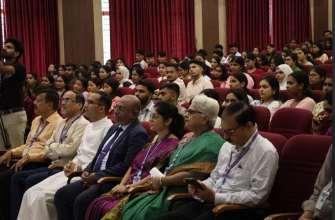
orientationprogrammeforthefirstyear postgraduate students on 30 June2025attheLCRIHall.
Dr. Surfraz J. Hasim, Principal of PA FirstGradeCollege,Mangaluru,was the Chief Guest. Dr. Alwyn D’Sa, Registrar of the College, Dr. Ronald Nazareth, Registrar of the University, Rev. Fr. Vishwas
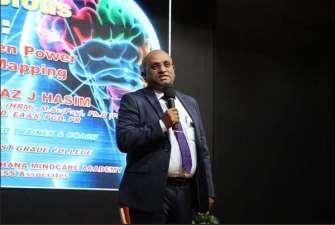
Misquith, SJ, Finance Officer of the University,PGDirectorsDr.Loveena Lobo and Dr. Asha Abraham were presentonthedais.
Dr. Asha Abraham welcomed the gathering, followed by the formal inauguration of the first-year PG programmes by all the dignitaries.
Dr. Loveena Lobo then introduced
the Heads of various postgraduate departments.
Dr. Alwyn D’Sa, Vice Chancellor (incharge), addressed the gathering and encouraged the students with his motivational words. He also briefed them on the core values upheldoncampus.
Internationally acclaimed Mind Trainer and Motivational Speaker, Dr. Surfraz J. Hasim, conducted a
session on the theme “Unlocking Hidden Power through Mind Mapping,” whichwaswellreceived bytheparticipants.
Dr.DivyaShetty,AssistantProfessor, PG Chemistry, compered the programme, and Dr. Shree Lalitha Suvarna,HeadoftheDepartmentof Biotechnology, proposed the vote ofthanks.



A spirit of achievement and new beginnings filled the campus of St Ann’s College of Education as it celebratedGraduationDay,marking a proud milestone in the academic journey of its M.Ed. and B.Ed. graduates.

The ceremony commenced with a solemn invocation of God’s blessings, followed by a graceful welcome dance. Dr Sr Dorothy D’Souza A.C., Principal, extended a warm welcome to the Chief Guest, Dr Molly Sanjay Choudhury, DirectoroftheManelSrinivasNayak Institute of Management, MSNM BesantCampus,Bondel,Mangaluru, and to the President of the programme, Sr Maria Smitha A.C., Joint Secretary of St Ann’s InstitutionsandSuperiorofStAnn’s Convent,Mangaluru.
In her inspiring address, Dr Choudhuryemphasisedthevalueof lifelong learning, encouraging graduates to remain curious, committed, and passionate in their professionallives.Shespokeofhow work rooted in passion brings enduring satisfaction and happiness.
The Vice Principal and Controller of Examinations, Prof. Dr Flosy D’Souza, presented the academic toppers of the B.Ed. and M.Ed. programmes. Students who earned endowed prizes were also
felicitated.MsAishaNishana(M.Ed) and Ms Bindu (B.Ed) were awarded goldmedals,presentedbytheChief GuestandthePresident.
The programme was elegantly compered by Ms Rishel Oshin D’Almeida, while Mrs Bhavya, the convener, proposed the vote of thanks.
The joyous occasion was witnessed byavibrantgatheringthatincluded graduating students, their parents, faculty members, the sisters of the campus, alumnae, and fellow students.
MediaRelease
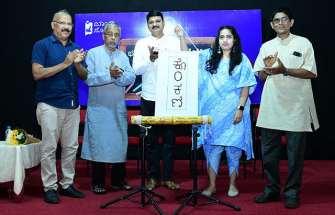
Mangaluru, Jun 30: “Mandd Sobhann is celebrating this year as the Year of Children. In January, therewasamusical concertbya 9-
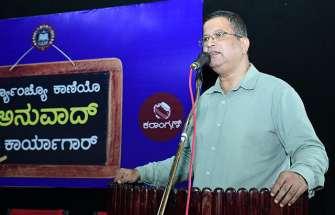
year-old girl; in February, a choral performanceby70children;inMay, residential summer camp for 61 children; Hindustani and Konkani vocal training for 100 children throughout the year, through Sur

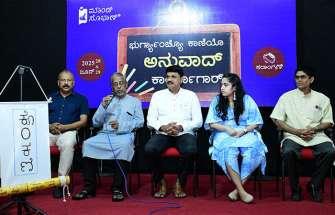
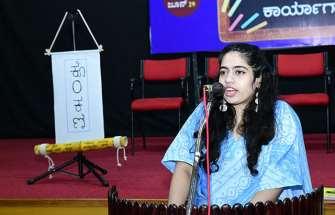
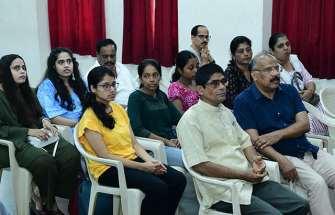
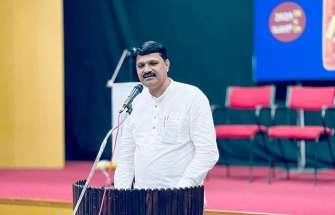
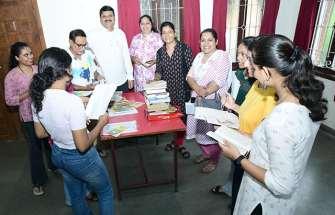
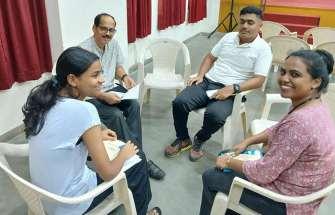
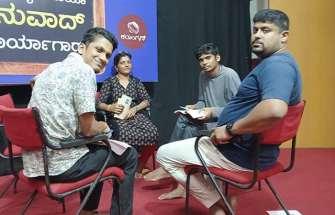
Sobhann. Now, a Children’s story translation workshop has been conducted, followed by the publication of a book containing translatedstories,andinNovember, achildren'sliteraturefestivalwillbe




held,” said Mandd Sobhann president,LouisJPinto.


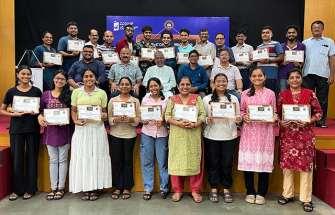
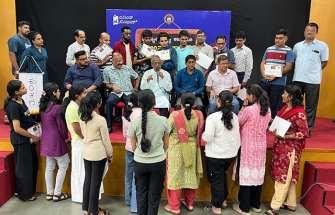
He was speaking at the valedictory of the two-day residential translation workshop organized by
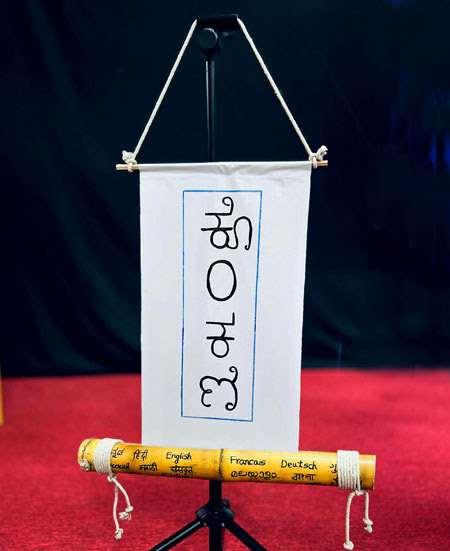
Mittakonn, the Literary Academy of Mandd Sobhann at Kalaangann, Shaktinagar on June 28 and 29. Certificates were distributed by ManddSobhannGurkarEricOzario.
Treasurer Alron Rodrigues was also present.
On day one, the workshop was inaugurated by advocate and multilingual writer Muddu Teerthahalli (Vitasha Ria Rodrigues) through a symbolic unfurling of a banner with KONKANI written on, from a bamboo container bearing
the names of different languages. She then delivered a talk on “The Importance of Translation in Children’s Literature.” Konkani poet and children’s writer Jossy Pinto Kinnigoli explained the techniques and challenges of translation and answered questions posed by the participants. On the second day, Writer and journalist Hemacharya spoke about the role of virtues in children’s literature. Participants also read and learned from the widely discussed article “Modules and art of translation” by Dr Pratap Naik,Goa.
Participants selected two stories each from various languages and translated them. These stories were discussed in groups, and all translated stories will be published byManddSobhannintheformofa book. Mittakonn co-ordinatorRony Crasta introduced the workshop. The inauguration was hosted by Arun Raj Rodrigues and the valedictorywasconductedbyVitori Karkal. Vikas Lasrado and Savita Saldanhaextendedtheirsupport.

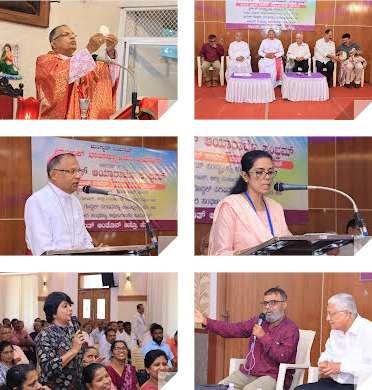
Mangaluru, June 29– The Diocese of Mangalore joyfully celebrated
Laity Sunday under the spiritual leadership of Most Rev. Dr Peter
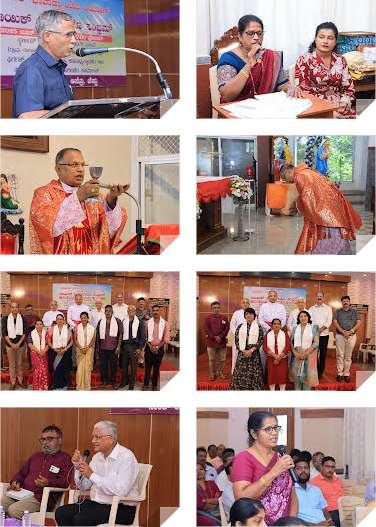
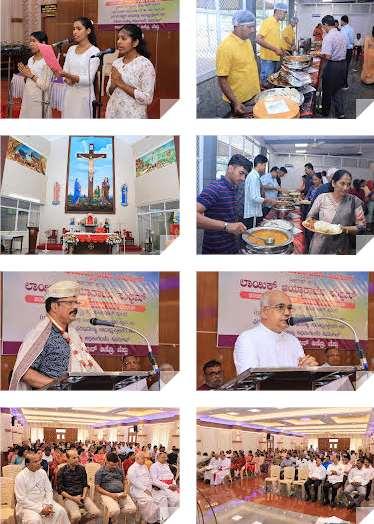

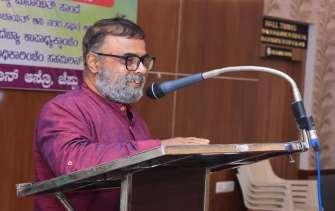
PaulSaldanha,BishopofMangalore.
This annual celebration, rooted in theCatholicChurch’srecognitionof the triple mission of the lay faithful tosanctify,toteach,andto serve honored lay Catholics who actively contribute to civic, social, andecclesiallife.
The event brought together vice presidents and secretaries of parishes, elected representatives from district, taluk, and gram panchayats, as well as presidents and office-bearers of cooperative banks and institutions. Their presence affirmed the vibrant and constructiveroleoftheCatholiclaity in building a just, compassionate, andparticipatorysociety.
In his presidential address, Bishop Peter Paul Saldanha extended heartfelt congratulations to Senior Advocate M. P. Noronha on his appointmentasthePrincipalDistrict GovernmentAdvocateforDakshina Kannada by the Government of Karnataka. Describing Mr. Noronha as a devout Catholic and a respectedpublicservant,theBishop praised his legal brilliance, moral integrity, and dedicated service to boththeChurchandsociety.Healso highlighted Mr. Noronha’s success
in landmark cases, including the HotelMotiMahalcase,asashining exampleofhowCatholicvaluescan be lived out in the legal profession. He lauded him as “a model of Christiandiscipleshipinpubliclife.”
The Bishop further felicitated Catholic leaders serving in the Panchayat Raj system and in cooperative institutions, commending their significant contributions to local governance and economic empowerment, especially among the marginalized. He stated, “When the laity live out their vocation through honest leadershipandselflessservice,they become true witnesses of Christ, contributing meaningfully to the commongood.”
A special session, led by Wilfred D’Souza, provided insights on the roles, rights, and responsibilities of the laity in the Panchayat Raj system, encouraging greater civic engagement inspired by Catholic Social Teaching. The session was effectively moderated by Roy Castelino.
FrJ. B. Crasta, SecretaryoftheLaity Commission and Director of St Antony’s Charitable Institutions,
warmly welcomed the gathering. Theprogram wasgracedbyseveral distinguished Catholic dignitaries, including Fr Praveen Martis, Administrator of St Antony’s Institutions; Anil Lobo, Chairman of MCC Bank; Santosh D’Souza, President of the Catholic Sabha Central Committee; and Rolfie D’Costa, Secretary of the Surathkal Varado Pastoral Parishad, who read thecitationhonoringM.P.Noronha. DennisD’Silvaandotherprominent leaderswerealsopresent.
The event concluded with a heartfelt vote of thanks by Ms Ida, and the proceedings were skillfully compered by Ms Pramila Peris. The VaradoPastoralParishadsecretaries of the Diocese of Mangalore were actively involved in planning and organizingtheprogramme.
This Laity Sunday served as a powerful reminder of the vision of VaticanII,whichcallsthelayfaithful, byvirtueoftheirbaptism,tobe“the saltoftheearthandthelightofthe world” (Mt 5:13–14), bringing Christ’spresence and Gospelvalues into every sphere of life from families and parishes to public offices,courts,andvillagecouncils.

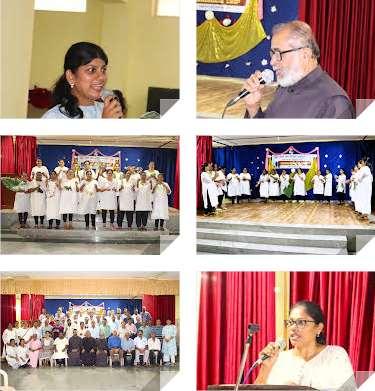

On Sunday, June 29th evening the “Fathers’ Day” was celebrated in a grand manner at Infant Mary Church, Bajjodi. Around 60 Dads & 40 others participated from 10 parish wards. The program began at 5pm with a prayer song. Anitha veigas welcomedthegathering.A
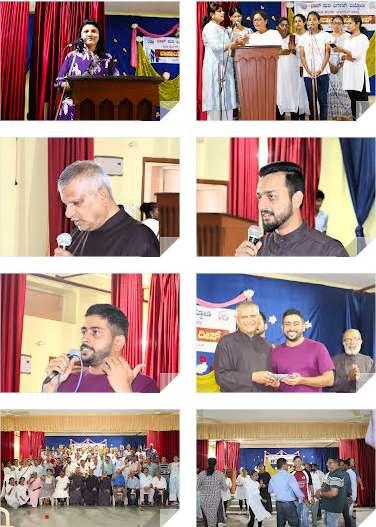
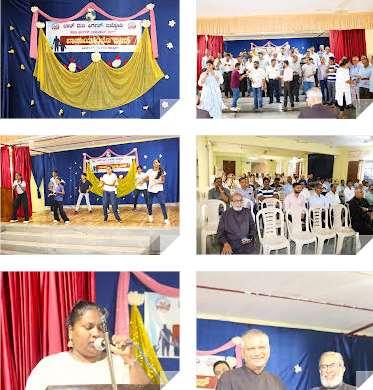
beautiful dance was performed by thealtarserversinfelicitationofthe Dads. Then parish ‘Women Association’ put up a meaningful song-dance performance on the various vegetables which are used by us daily, bringing out their
uniquefeatures.Dr.RenitaD’souza, the coordinator of “Seva Ayog” conducted many games to the Fathers’ gathered which were very entertaining.
Two of Fathers’ representatives Mr. VincentPintoandMr.AvinCutinha
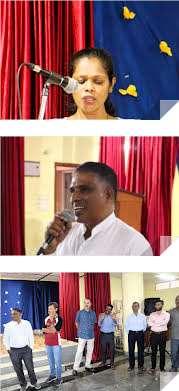
spoke on the role of a Dad in the growth of the Children which was very inspiring. Then, Mrs. Janet D’Souza, PPC Vice-president, spoke thewordsoffelicitationtotheDads appreciating their great sacrifice in their family life. Finally, Fr. Dominic Vas, Parish priest, spoke comparing theroleofaDadinthefamilytothe backbonewhichthoughunseenyet supports the whole body. The prizes were distributed to the winners in the games and all the Fathers were awarded with a memorable gift. The Program concluded with the voteofthanksbyMrs.ReshmaPinto andthesnacksandcolddrinkswere served to everyone. All appreciated the good organisation of the program by Dr. Renita and the “Seva Ayog” members.

The Sahodaya Association of St Aloysius(Deemedtobe University), Mangaluru celebrated ‘Helen Keller Day’ on 27th June 2025 at Joseph

Willy Hall. The United Nations has recently designated this day as the ‘International Day of Deaf blindness’.Thedayisobservedto



honourthelifeandachievementsof Helen Keller and to raise awareness abouttherightsandempowerment ofindividualswithdisabilities.
Ms Nguyen Thi Than Nhan, a Vietnamese national, currently pursuing PhD research work in Social Work specialising in disabilities from Mangalore
University served as the resource person. She shared her experience of working with youth with disabilities in Vietnam. Highlighting the Vocational Training Project organised by Caritas Danang, Vietnam she explained how the initiative equips young people with disabilitieswithbothvocationaland
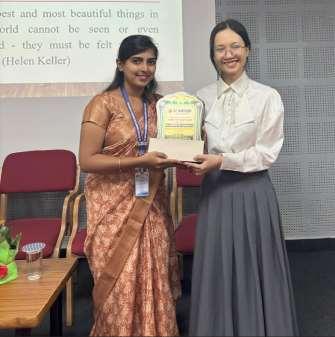
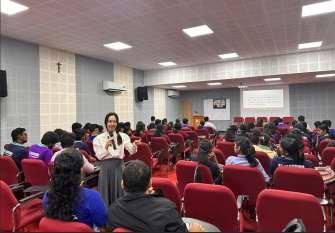
social life skills offering them certificates. She demonstrated that withvarioustrainingonsocialskills, vocational courses and extracurricular activities, individuals with disabilities could become employable. She encouraged the young participants to actively contribute to promoting inclusion and empowerment for people with disabilities.
Dr Roshan Fredrick Dsouza,
Assistant Professor, welcomed the gathering. Dr Charles Furtado, Director of Admin Block gave an openingremarkhighlightingthelife of Helen Keller and invited all participants to be empathetic with specially abled persons. The staff coordinator of the programme, Ms Bhoomika, Assistant Professor, Department of BCA proposed the vote of thanks. The student coordinator Shravan Acharya, presidents and secretaries of Sahodayawerepresent.
About Helen Keller: Helen Keller was an American author, educator, and disability rights advocate who overcame the immense challenges of being both blind and deaf. With the help of her devoted teacher, Anne Sullivan, she learned to communicate using sign language and eventually mastered speech and writing. Keller became the first deaf-blind person to earn a college degree and went on to inspire millions through her writings, speeches, and tireless work for people with disabilities. Her life stands as a powerful symbol of courage and perseverance in the faceofadversity.


A health camp was successfully inaugurated on 29th June 2025 at theMilagresChurchHall,organized by the Catholic Sabha, Milagres Church Unit, in collaboration with Milagres College of Nursing, the St.
Vincent De Paul Society, and the Health Commission of Milagres Church,Mangalore.
Thecampaimedtopromotehealth awareness, restore essential
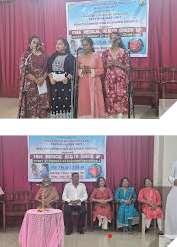

healthcare services, and provide free medical check-ups to the local community. It focused on preventive healthcare and educating people about the importanceofmaintainingahealthy lifestyle.
The event commenced with a melodious prayer song performed bythestudents ofMilagresCollege of Nursing, setting a serene and respectfultonefortheoccasion.
Mr. David Pereira, President of the Catholic Sabha, Milagres Unit, extended a warm welcome to the gathering and acknowledged the efforts of all the organizing teams andparticipants.
Dr.DianaLobo,PrincipalofMilagres CollegeofNursing,emphasizedthe importance of utilizing health check-up services. Dr. Beena, who has rendered commendable service to the Milagres Health Center, was felicitated by the organizers for her selfless contributions. Dr. Padmanabh Kamath was recognized for his generous donationofanECGmachine,which

willsignificantlysupportcommunity healthcareefforts.
The Presidential Address was delivered by Rev. Fr. Bonaventure Nazareth, Parish Priest of Milagres Church. He applauded the collaboration among the institutions and encouraged continuous efforts toward community welfare. He recognized and expressed his gratitude for the contributions made by Mr. Valarian D’Souza and Mrs. Anitha. He also announcedplanstoconductsimilar health camps on the fourth Sunday of every month, reaffirming their commitment to public health and well-being.
Theeventconcludedwithaheartfelt vote of thanks delivered by Mrs. HildaRodrigues,PresidentoftheSt. Vincent De Paul Society (SVP). She expressed deep gratitude to all
dignitaries, healthcare professionals, volunteers, and participants for their invaluable supportandinvolvement.
FacilitiesandServicesOffered
The health camp provided the following free medical services to thepublic:
Generalhealthcheck-ups
Blood pressure and blood sugar testing ECGservices
Health counseling and awareness sessions
The entire programme was efficiently compered by Ms. Reshal Monteiro,aB.Sc.Nursingstudentat MilagresCollegeofNursing.
=======================
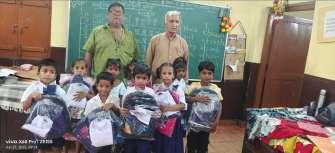
Friends of 3L students distributed new school bags, stationery, and a pair of uniforms to 9 students (5 girls and 4 boys) who are newcomers in Government Primary School, Ramdas Panaji. It is a

Kannada medium school near the Pharmacy College, Panaji. This academic year the strength of the school has come down. There are only34students.



In view of the feast of our Lady of Miracles,thePatronoftheParishof Milagres Church Mangalore, MAGNIFICATEve,wasarranged.
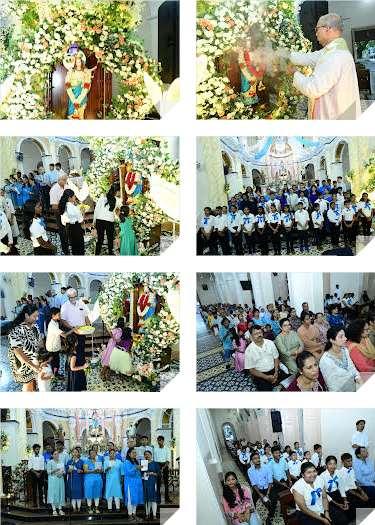
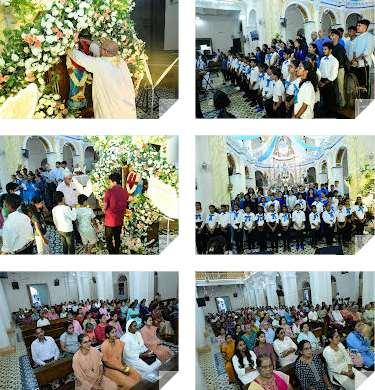


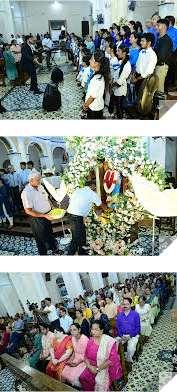
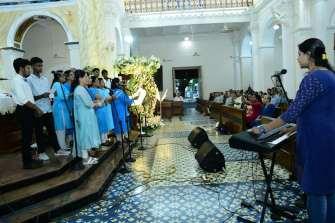

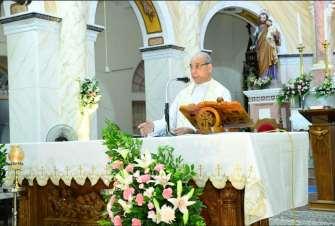
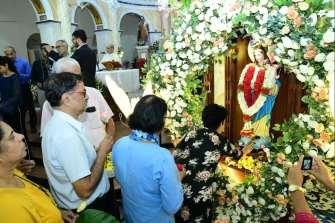
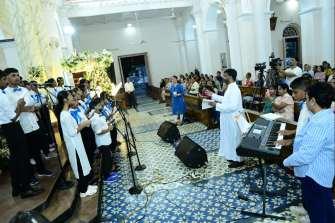
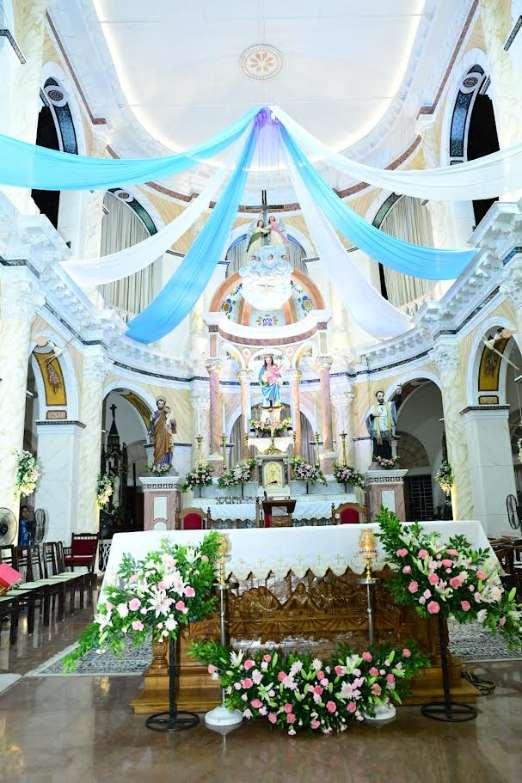
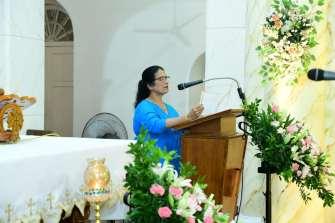

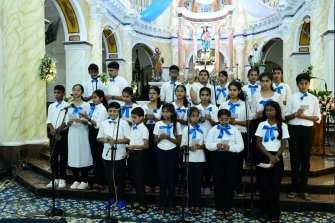
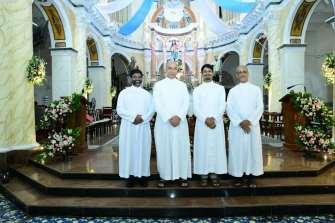
beautifultimetosingMarianHymns to honour and hailour Blessed Mother. The Konkani senior choir sang Milarie Maye and Amme Ente Amme, a Malayalam hymn. The English choir voiced Hindi and English hymns he Konkani junior choirsanganjasangathaandMathe Mammathe, a Kannada hymn
whereas the English choir voiced English and Portuguese hymn. The Parish Priest conducted the ceremony with prayer and reflection. The people honoured
Our Blessed Mother by offering flowersindividuallyathergrottoon theoccasion. Thegatheringfeltthe Maternal care and concern of our blessedmother.


